Tesla Model Y Vs. Kia EV6: Best Against Next
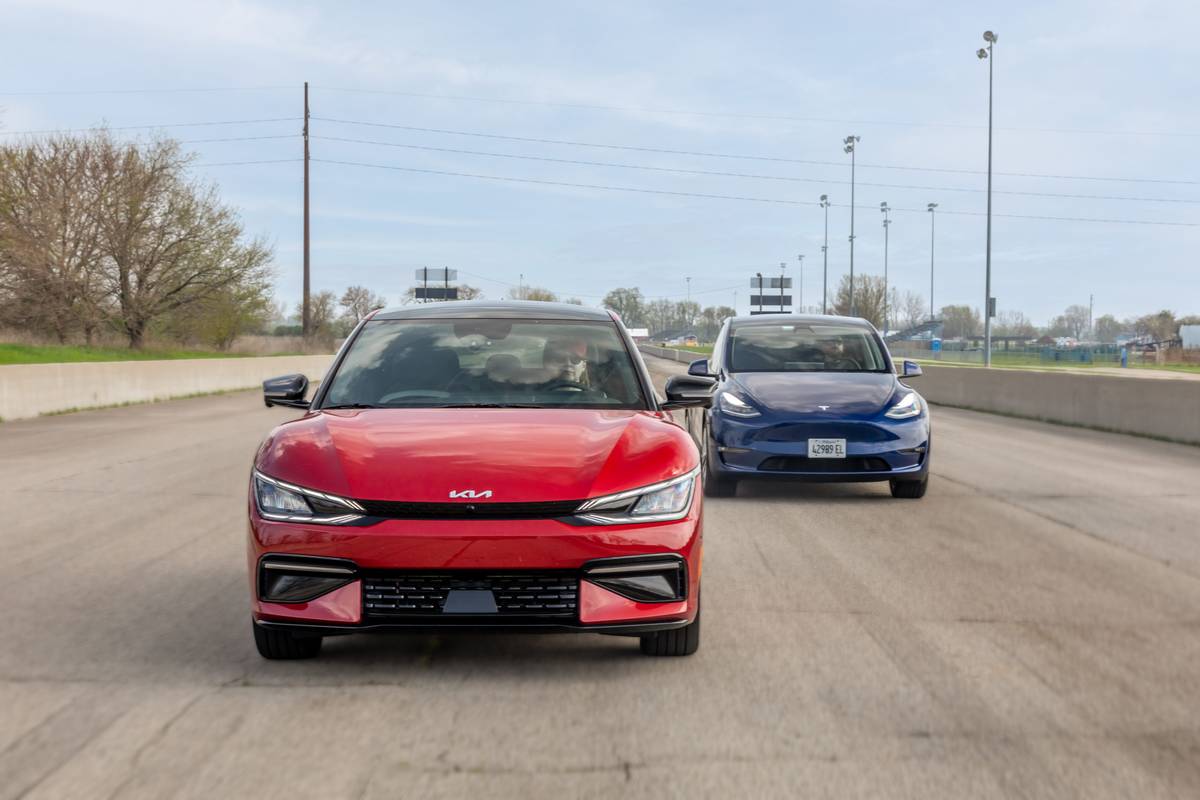
No longer a science experiment for niche shoppers, electric vehicles are readily available in the popular body style today’s consumers want: SUVs. The Tesla Model Y has undoubtedly been the standard by which we judge electric SUVs since its launch and is one of the most popular EVs being sold. Kia may not have the EV cultural panache of Tesla, but it’s no stranger to electric cars, having sold limited-availability EVs since around 2014 with the Soul EV and, later, the Niro EV. But the all-new EV6 is a modern, long-range EV with the distinctive design, innovation and value we’ve come to expect from contemporary Kias. It’s a high-riding hatchback with available all-wheel drive, 274 miles of EPA-rated range (as we tested it) and DC fast-charging claims of 10%-80% battery capacity in 18 minutes — all compelling specifications against a Model Y.
An EV6’s price is also more Tesla-like than you’d think: A top-of-the-line GT-Line trim level is around $57,000 (including destination), which isn’t far off of the $60,290 we paid for our Model Y Long Range AWD (326 miles of rated range) in mid-2021. But if you ordered our Model Y now, that same SUV would cost nearly $73,000 because of substantial price hikes in only a year. That got us wondering: Is the Tesla Model Y a roughly $16,000-better EV than the Kia EV6?
Related: Hyundai Ioniq 5 Vs. Tesla Model Y: Functional Vs. Funky
To find out, we spent a week testing both in a head-to-head comparison judging home and fast charging, efficiency, acceleration, handling, ride, comfort, cargo and more. We took the EVs on a 215-mile highway route to measure efficiency and to the drag strip to measure acceleration. We also drove them on a small handling course to experience their handling dynamics and on street-driving loops. Being an EV test, categories with the most significance included home- and fast-charging speed, driving efficiency and range accuracy, accounting for a third of overall points.
| 2022 Kia EV6 | 2021 Tesla Model Y | ||
|---|---|---|---|
| Cars.com Judges’ Subjective Scores | |||
| Front seats | (out of 20) | 15 | 12 |
| Rear seats | (out of 20) | 11 | 14 |
| Vehicle UI (screens, controls) | (out of 20) | 16 | 10 |
| Multimedia (apps, sources) | (out of 20) | 15 | 14 |
| Interior quality | (out of 20) | 11 | 12 |
| In-cabin storage | (out of 20) | 15 | 12 |
| Visibility | (out of 20) | 6 | 9 |
| Driving Tests | |||
| Powertrain | (out of 20) | 11 | 16 |
| Braking | (out of 20) | 14 | 17 |
| Ride quality | (out of 20) | 17 | 8 |
| Handling | (out of 20) | 13 | 18 |
| Noise | (out of 20) | 15 | 10 |
| As-tested value | (out of 20) | 15 | 10 |
| Cars.com Judges’ Scores Total | (out of 260) | 174 | 162 |
| Objective Scores | |||
| Safety features | (out of 20) | 19 | 18 |
| Driver-assist tech | (out of 20) | 12 | 12 |
| Cargo storage | (out of 20) | 14 | 18 |
| Child-safety seats | (out of 20) | 20 | 12 |
| EV-Specific Tests | |||
| Fast charging | (out of 40) | 40 | 28 |
| Home charging | (out of 60) | 43 | 60 |
| Observed efficiency | (out of 50) | 49 | 50 |
| Range accuracy | (out of 50) | 46 | 48 |
| Acceleration | |||
| 0-60 mph | (out of 20) | 20 | 20 |
| Quarter-mile | (out of 20) | 19 | 20 |
| Objective Scores Total | (out of 320) | 282 | 284 |
| FINAL SCORE | (out of 580) | 452 | 446 |
The results were closer than we expected. Let’s look at the areas where we saw the most noticeable differences — and surprises.
2: 2021 Tesla Model Y Long Range AWD
The verdict: The Model Y didn’t shine in our EV-specific testing as brightly as the specifications suggest it should have, and it tanked one test, but the Model Y remains a clear winner in other areas.

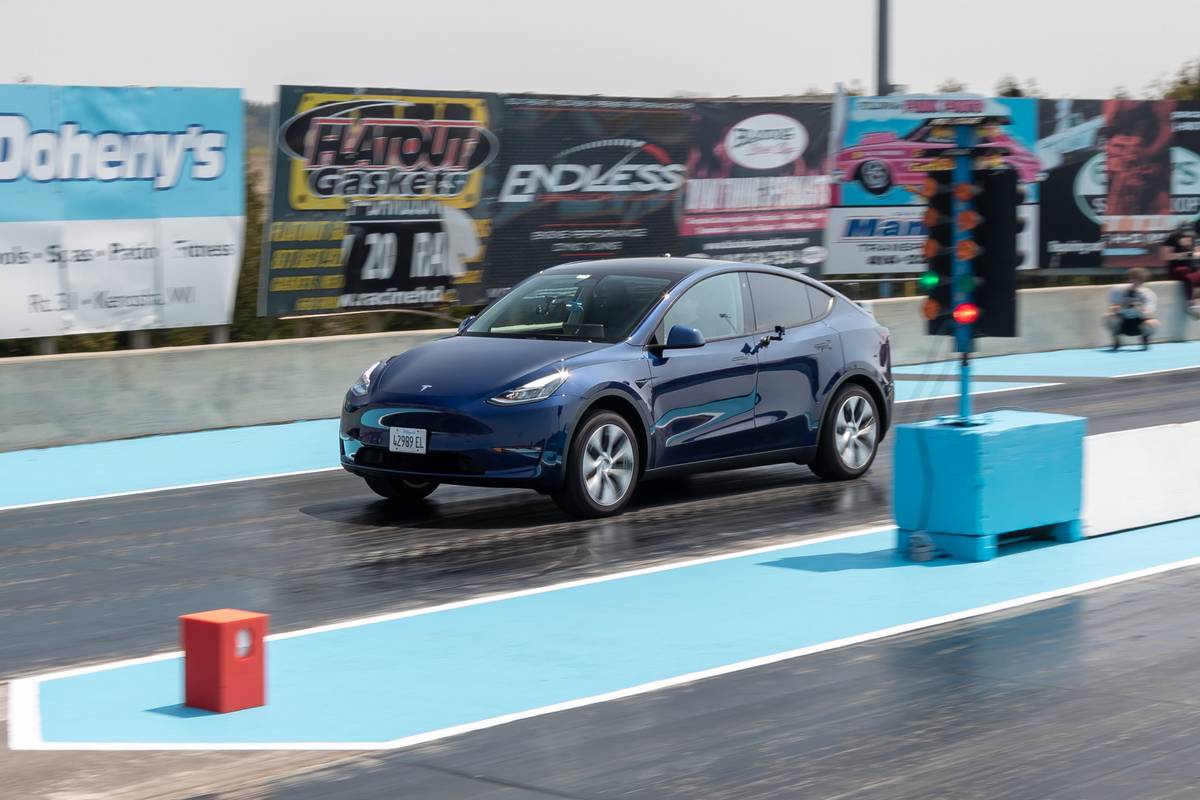
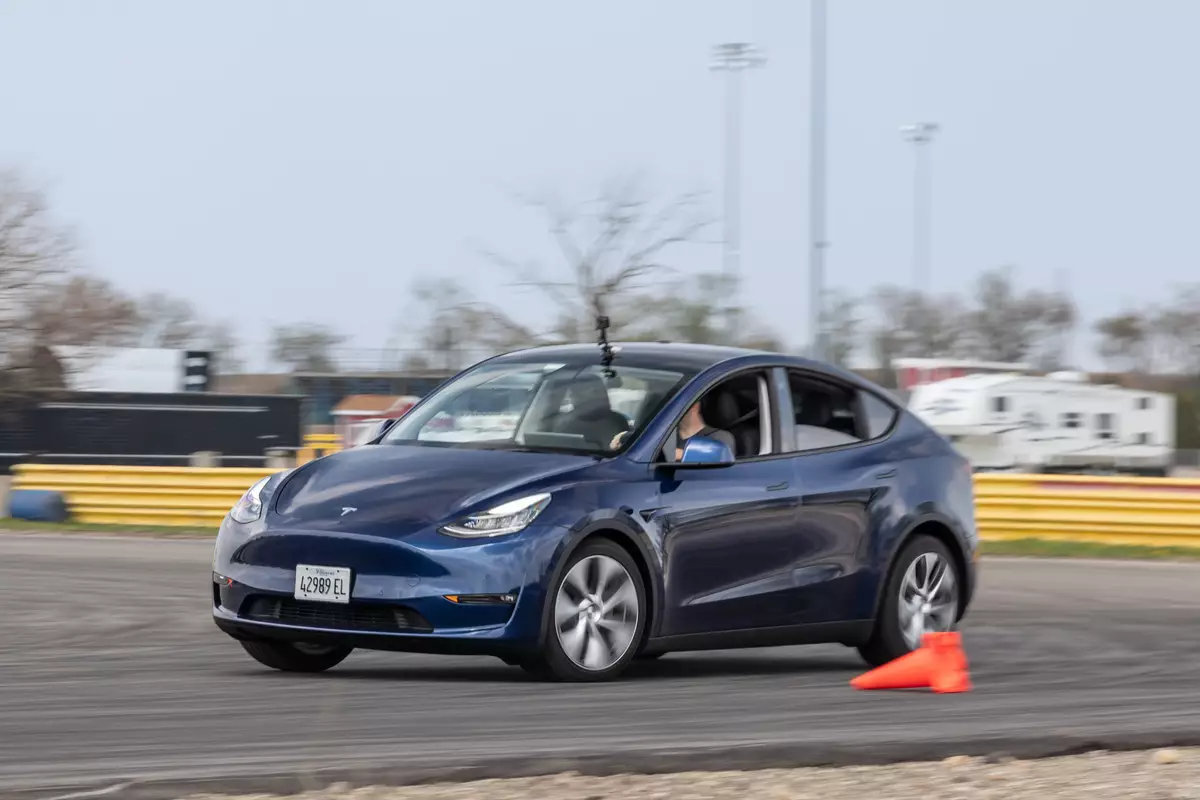
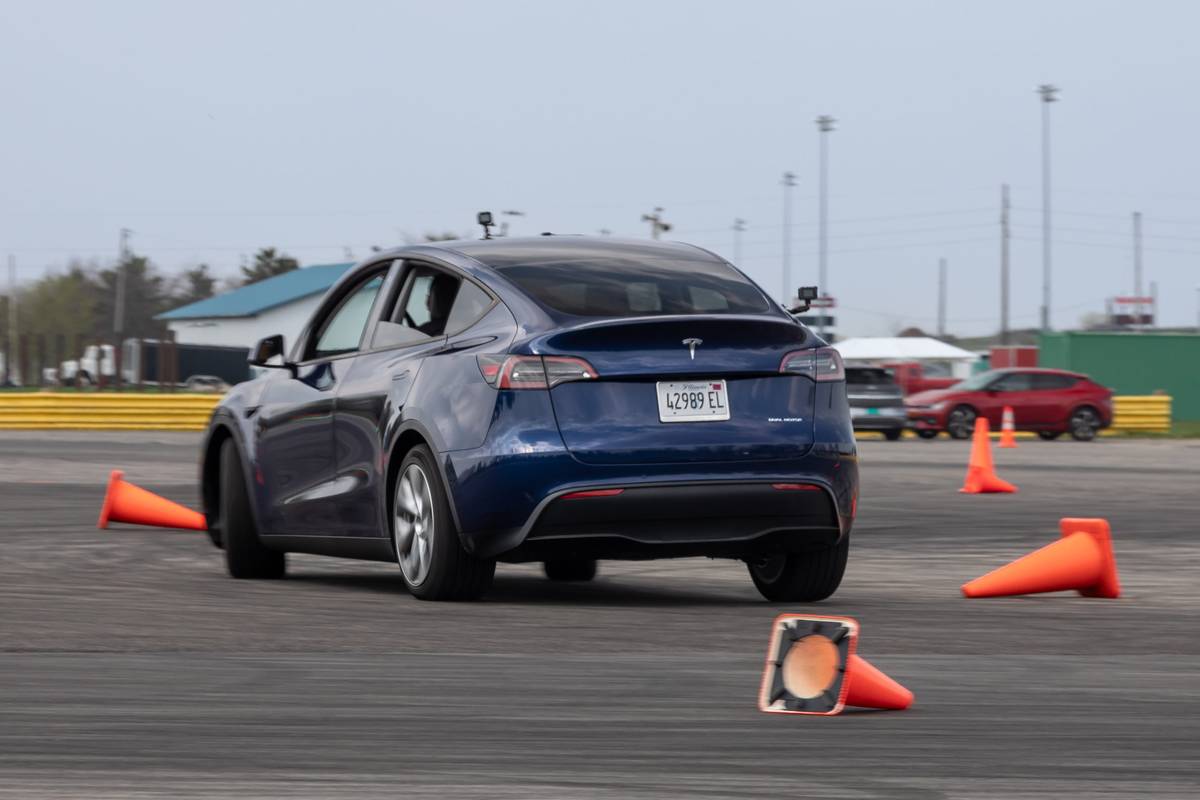
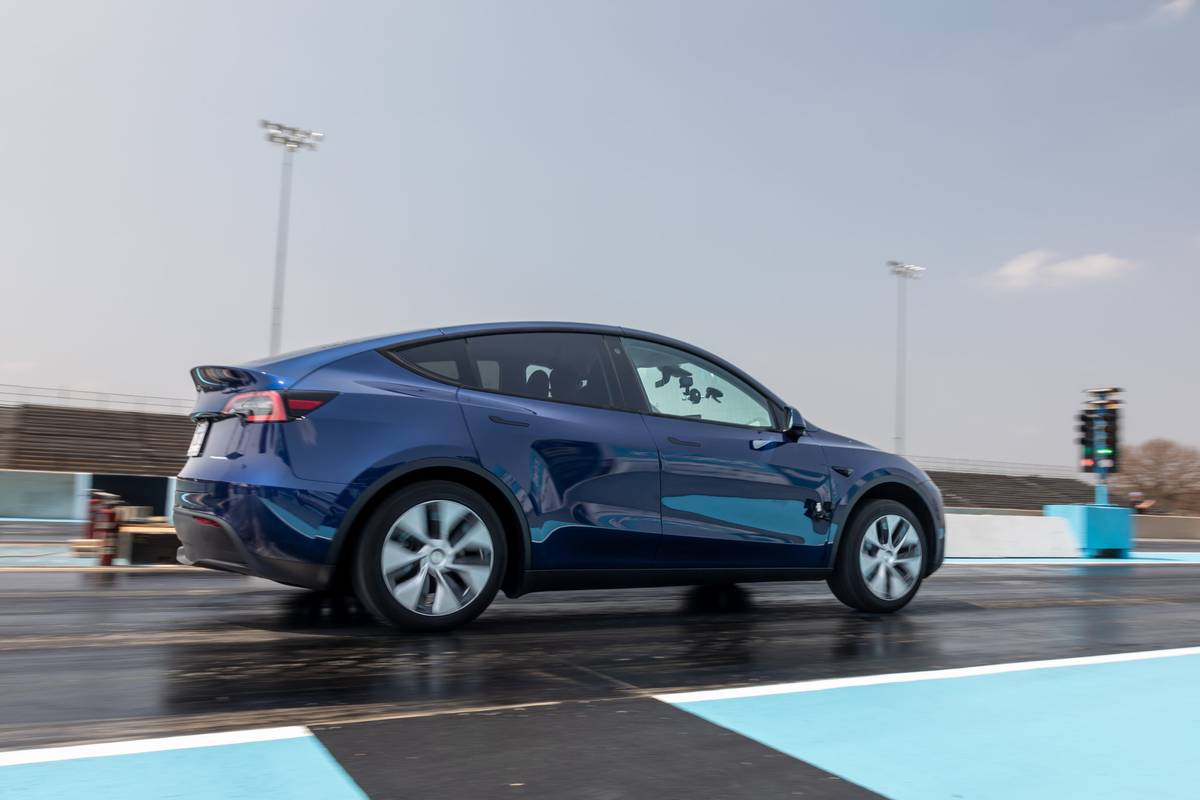





Our Test Vehicle
- As-tested price: $72,440, if bought today (including $1,200 destination and $250 ordering fee)
- 0-60 mph: 4.79 seconds
- Quarter-mile acceleration: 12.77 seconds at 114.35 mph
- EPA-rated efficiency (mpg-equivalent): 125
- EPA-rated range (miles): 326
We bought a Model Y in 2021 for its merits of long-rated range, high efficiency and top home and fast-charging abilities. Its promise of updatability was key, too, as Tesla’s over-the-air updates can significantly change how the car operates — for better and (as we’ve discovered as owners) for worse. Things that remain polarizing are its large touchscreen as the main interface, ride quality and its lack of a driver-focused instrument panel.
In this comparison, the Model Y came up short in our fast-charger testing, didn’t show a large advantage in our highway efficiency test, and its maximum predicted range (based on consumption and not the EPA rating display on the home screen) wasn’t hugely different from the EV6. The Model Y still has undeniable strengths, however, including its home-charging speed potential and sporty driving feel. Plus, it’s more ergonomically comfortable for front and rear occupants.
The Good
Home charging: As the category with the single highest points potential, home charging is where we give points to the EV that makes the most of charging where owners will do the bulk of it: at home. The Model Y, using the same electric vehicle service equipment (the thing that mounts on the wall, often called the “charger”) and at a similar state of charge as the EV6, added 46 miles of predicted range in an hour versus the EV6’s 33 miles of range in an hour. Both took around 11 kilowatt-hours of energy, but the more efficient Model Y converted that energy into more miles of range.
Higher-speed acceleration: The Kia bests the Model Y by a tenth of a second to 60 mph, hitting 60 in 4.69 seconds versus 4.79 for the Model Y, but the Tesla maintains its acceleration past 60 mph. That most shows up in quarter-mile acceleration times: The Model Y is about a half-second faster than the EV6, and with a trap speed of 114.35 mph, it’s traveling 12 mph faster, too. Quarter-mile acceleration is primarily a standard by which performance cars are measured, so it might mean less to EV shoppers, but you feel this difference in everyday driving when passing at higher speeds where the Model Y rockets away from 40, 50 or 60 mph versus the EV6’s whimper when the accelerator is floored at the same speeds.
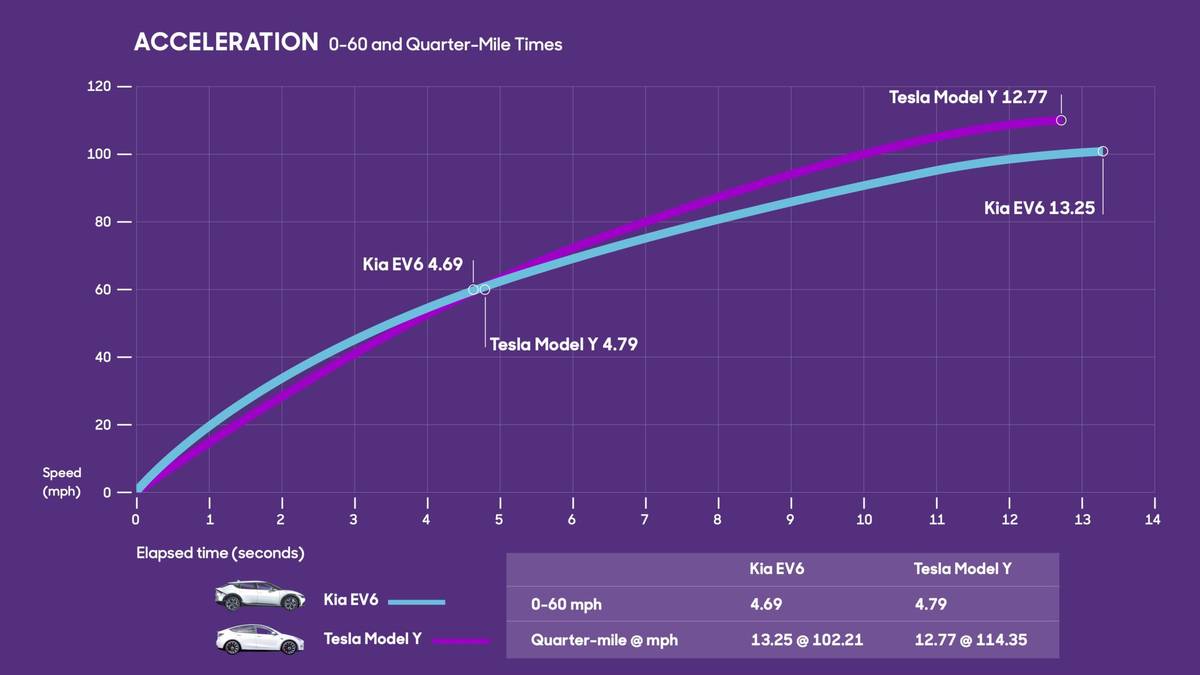
Handling: Continuing the theme that the Model Y is the livelier SUV to drive, it has more sports-car-like reflexes with flat, crisp handling and communicative steering feedback that make it eager and willing to change directions. On a small handling course, the Model Y proficiently rounded sharp corners and was genuinely entertaining to drive. The EV6 doesn’t handle poorly, but it’s not as eager, nor as rewarding, as the Model Y when driven spiritedly.
Cargo: The Model Y is 1-3 inches larger than the EV6 in most exterior dimensions, allowing it room for an optional limited-use third row, but the biggest difference is in its cargo-carrying abilities: We measured an impressive 32% more cargo space in the Model Y: 23.71 cubic feet of cargo space behind the second row (including in the rear tub beneath the cargo floor) and in the front trunk versus the EV6’s 17.96 cubic feet of total cargo space. The Tesla’s front trunk is actually large enough for luggage versus the EV6’s small front trunk that’s about the size of a large briefcase.
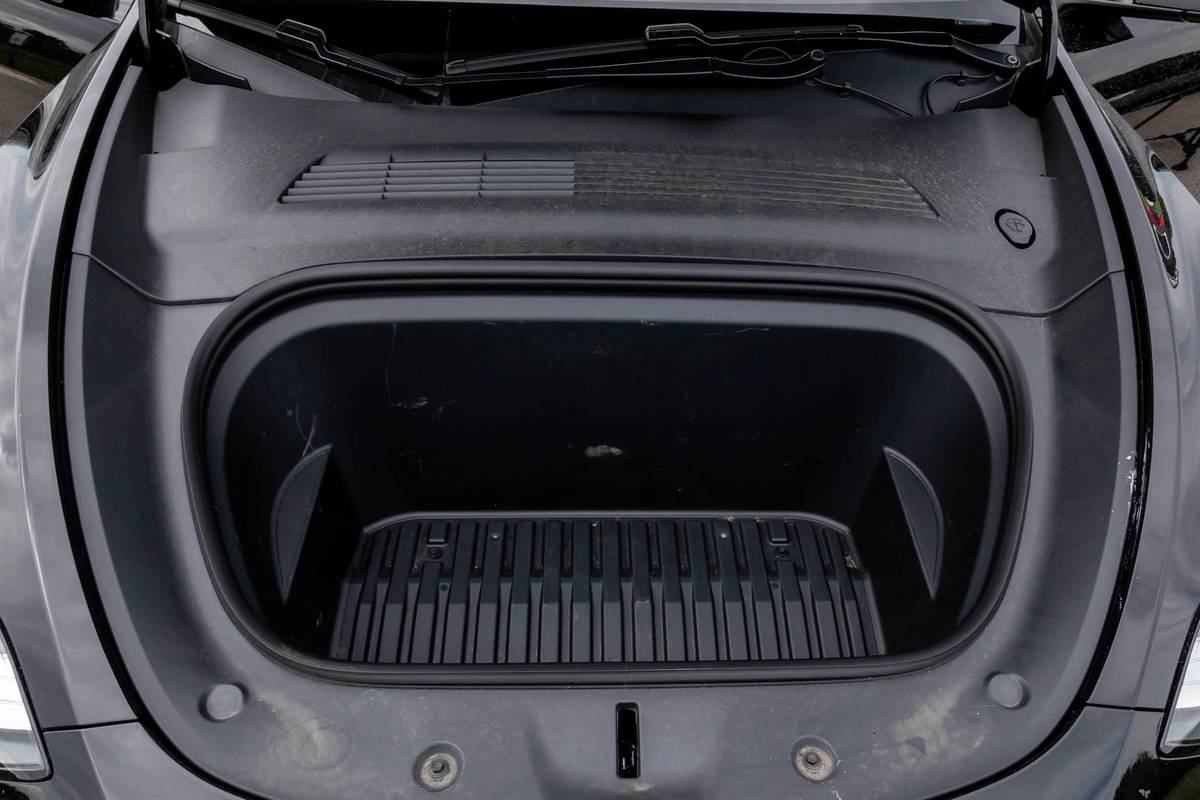
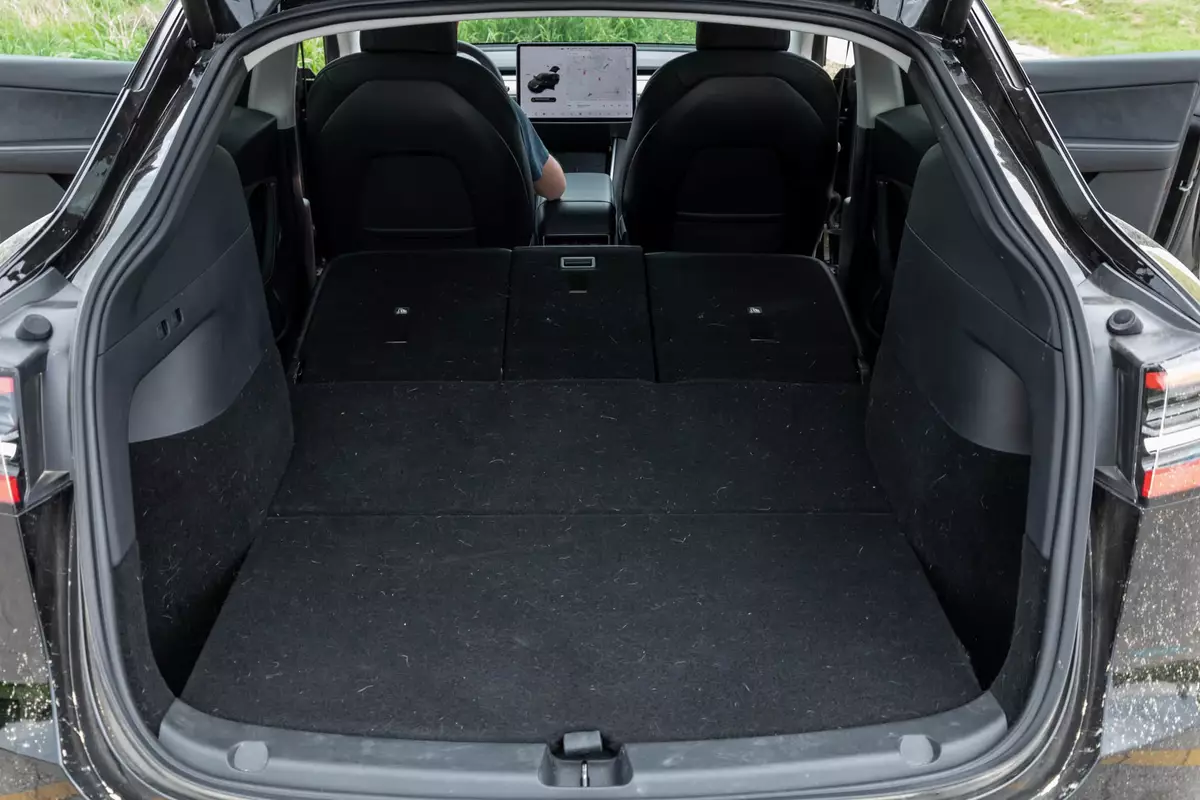
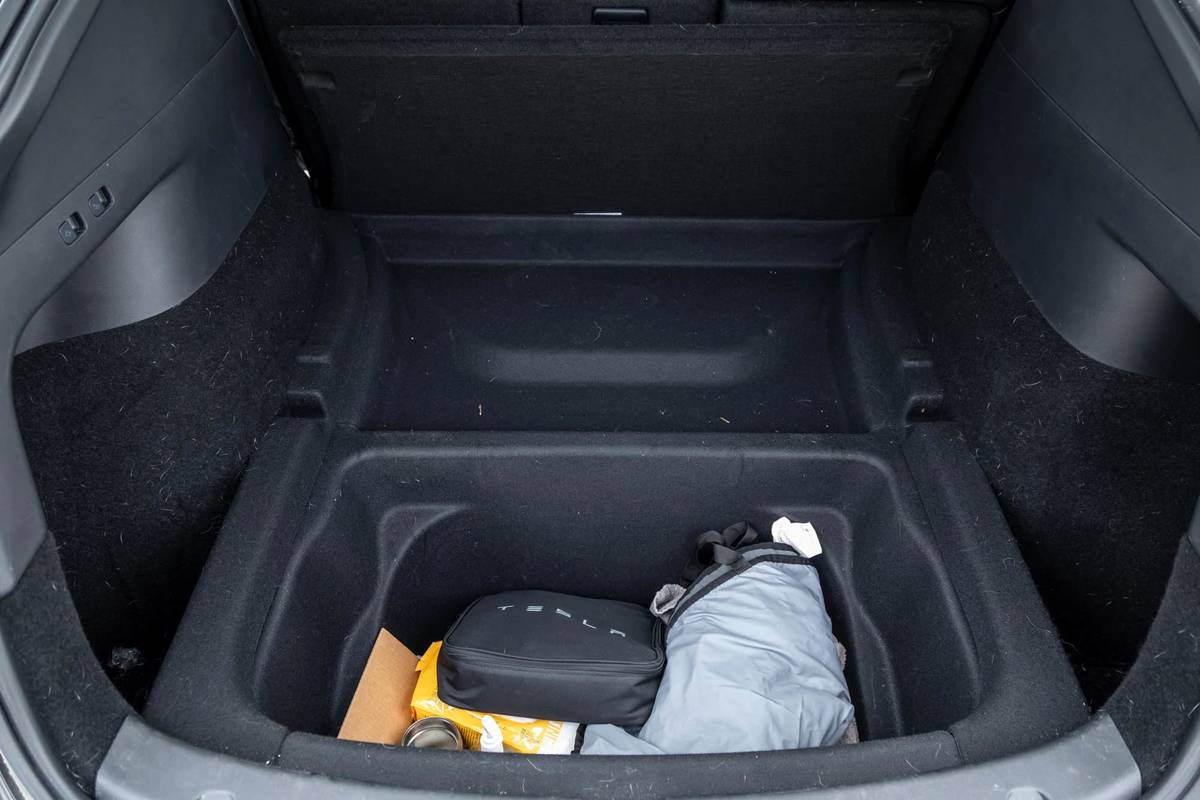
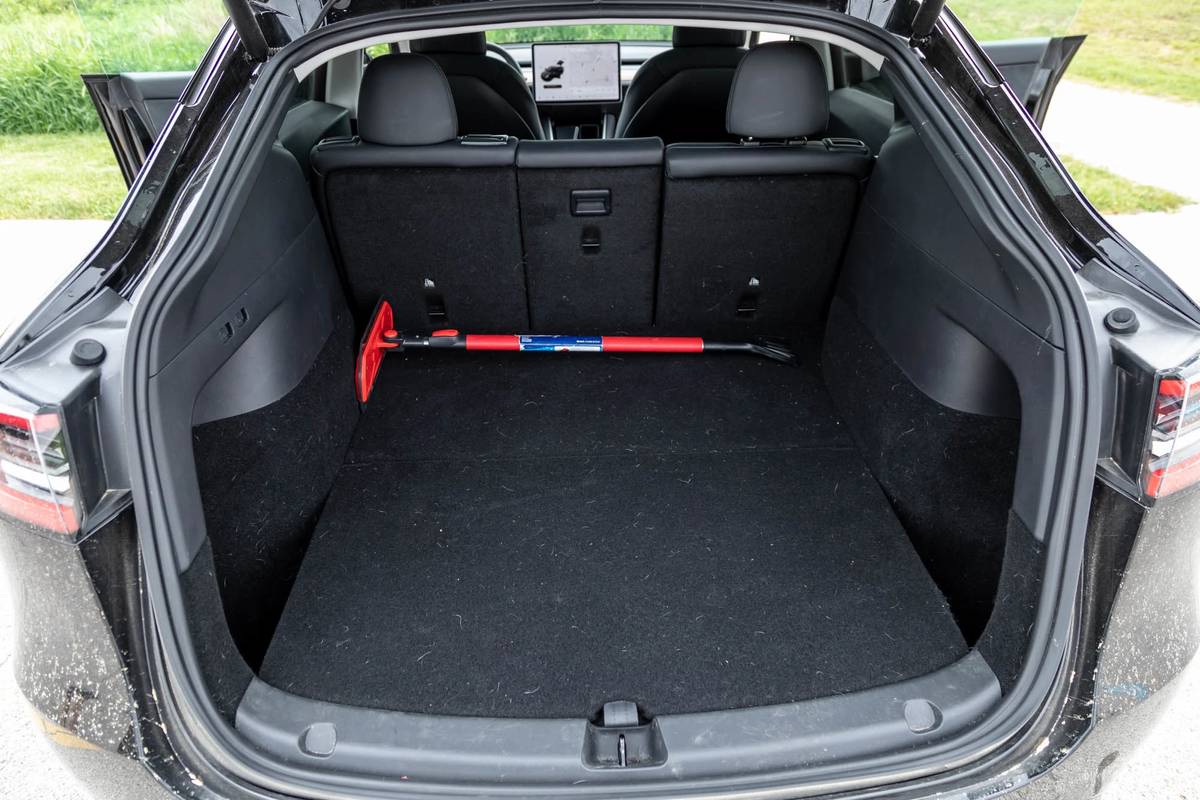
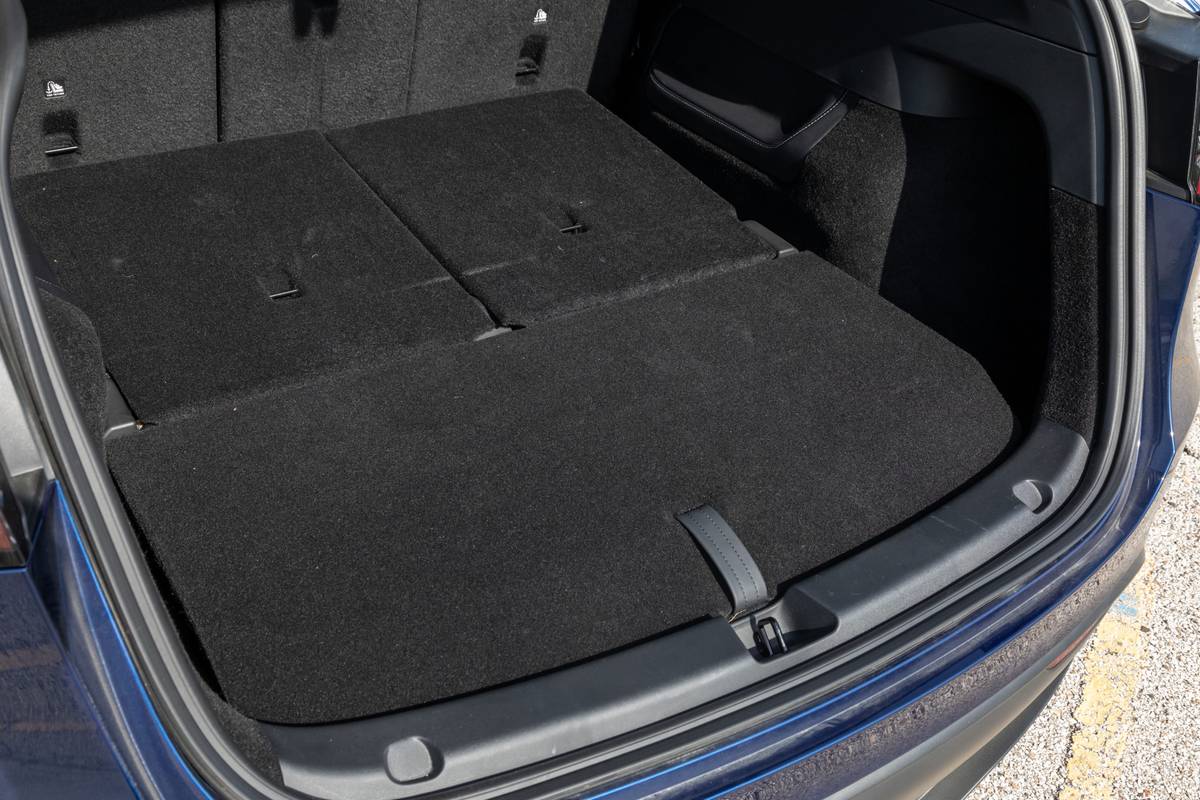







Updatability: The depth of the Model Y’s updatability has minimal bounds: The user interface, drive system, battery operation and charging systems are all capable of being updated over the air. However, sweeping changes can happen with large updates — and they can affect how you use the car, requiring relearning. They can also eliminate favorite features, which is what happened with the 11.0 software update (though Tesla has since added functionality back). The EV6’s updatability, however, is currently limited to the user interface and navigation.
The Bad
Fast-charging speed: Home charging is the important consideration in EV ownership, but consumers don’t want to be stuck away from home (or don’t like the idea of it), so DC fast charging, which is only available commercially, has significance in the shopping experience. To test DC fast charging, we took the Model Y and EV6 to respective fast chargers that max each EV’s capabilities. This meant a 250-kilowatt Tesla Supercharger for the Model Y’s maximum 250 kW and a 350-kW Electrify America DC fast charger to max the EV6’s 240-kW capability. (Note: Tesla and Electrify America both have less powerful chargers, too.) The test took place at the end of a 215-mile highway driving route on a 90-degree day to simulate road-trip charging. Our goal? To see how long it takes, and how many miles of range could be added, from 18%-80% state of charge.
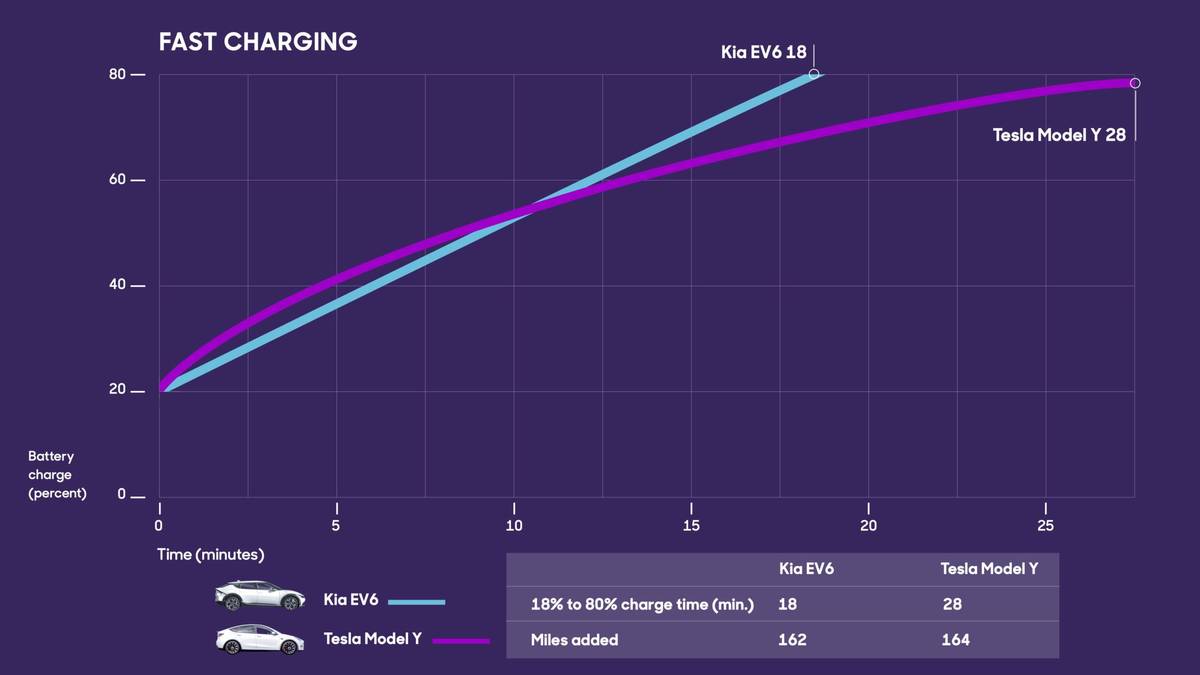
The Tesla started off strong, charging at its maximum 250 kW right out of the gate, but it didn’t keep pace very long as it gradually declined, and crawled to the 80% state-of-charge finish line at a weak 52 kW. Total charge time took 28 minutes to fast charge to 80% while adding 164 miles of range for an average of 5.9 miles of range added per minute. The range estimation we used for this test was from the Energy App, which predicts energy usage based on consumption and driving patterns over the past 30 miles (as opposed to the number displayed in the main screen that uses EPA-rated consumption without observing real-time consumption).
Adding 164 miles of range in 28 minutes is respectable compared with most EVs, but 3 miles away at the Electrify America station, the EV6 added 162 miles of range in a staggeringly quicker 18 minutes, which replenished the car at a rate of 9 miles of range added per minute; more details on the EV6’s impressive fast-charger showing are below. Despite the category overall having less weight than home charging, this fast-charging loss is what took the biggest chunk of points from the Model Y’s scores.
What you also have to consider, however, is access to 350-kW chargers. While they’re growing in popularity, there were only two near us in Northern Illinois versus a dozen-plus 250-kW Superchargers. We didn’t objectively score fast-charger availability, but Tesla has a clear advantage in our area.
User interface: There’s genius here, but it’s mixed with questionable choices that aren’t easier to live with as we put more miles on the SUV. Not having an instrument panel is disruptive to driving, and it’s not getting more comfortable to look down at the screen for the speedometer, blind spot camera views or any other vital information while driving.
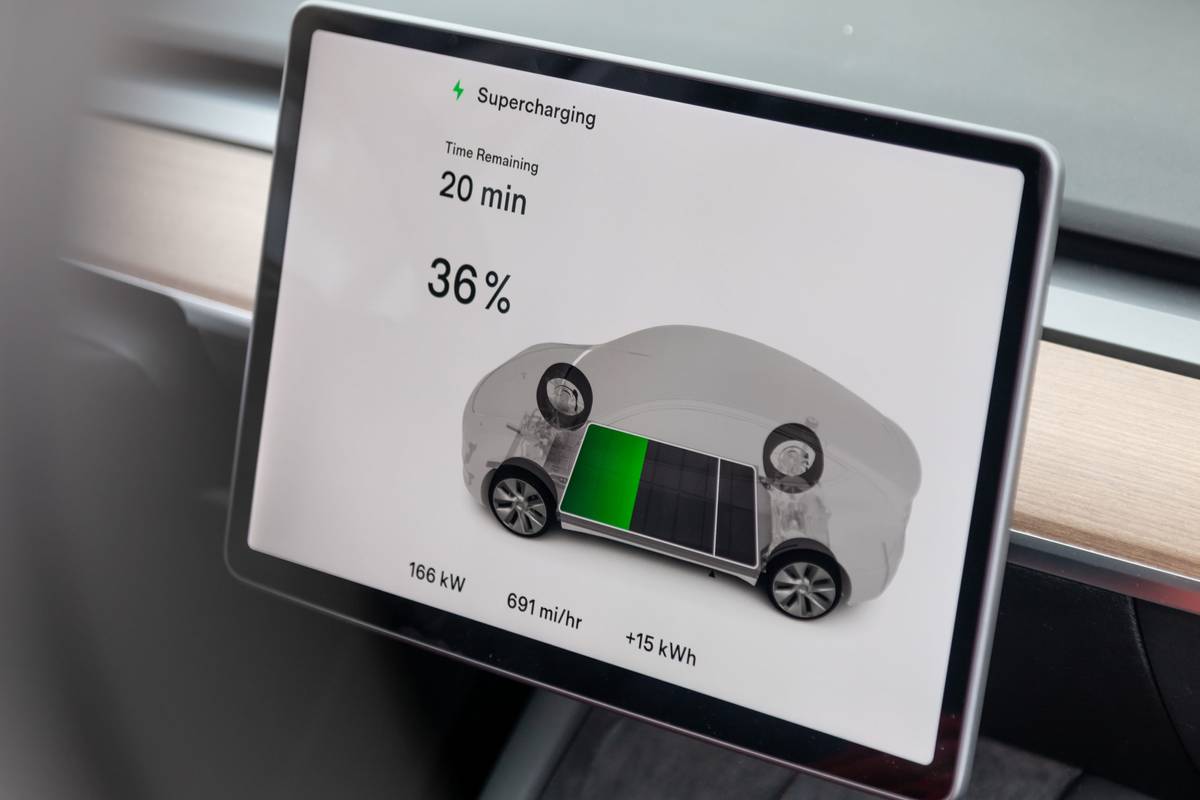
Sometimes old-school controls, like a stalk to control the windshield wipers, are preferable to Tesla’s change-what’s-not-broken approach, which puts wiper controls in the touchscreen. Also, even with a light rain and the wipers in automatic mode, they didn’t activate; we had to manually push the mist button at the end of the turn signal stalk to turn them on.
What’s done well, however, is the customizable homepage, where users can select apps and features to live on the front of the screen, plus different user profiles carry memory seating positions and other presets with them. Thankfully, an update prior to testing brought back the ability to put heated seat and heated steering wheel buttons back on the homepage, which had disappeared in a December update.
Ride quality: There’s no denying the Model Y’s ride quality is decidedly firm, borderline uncomfortable; it’s the price to pay for the handling proficiency and engaging dynamics. When the Model Y does hit a bump, however, it’s absorbed with composure versus sloppiness, but you feel those bumps in the road …
Noise: … And you not only feel the bumps, but you hear them like the thump and thwack of a basketball hitting the court whenever the Tesla rolls over bumps, road imperfections or tar lines in the road.
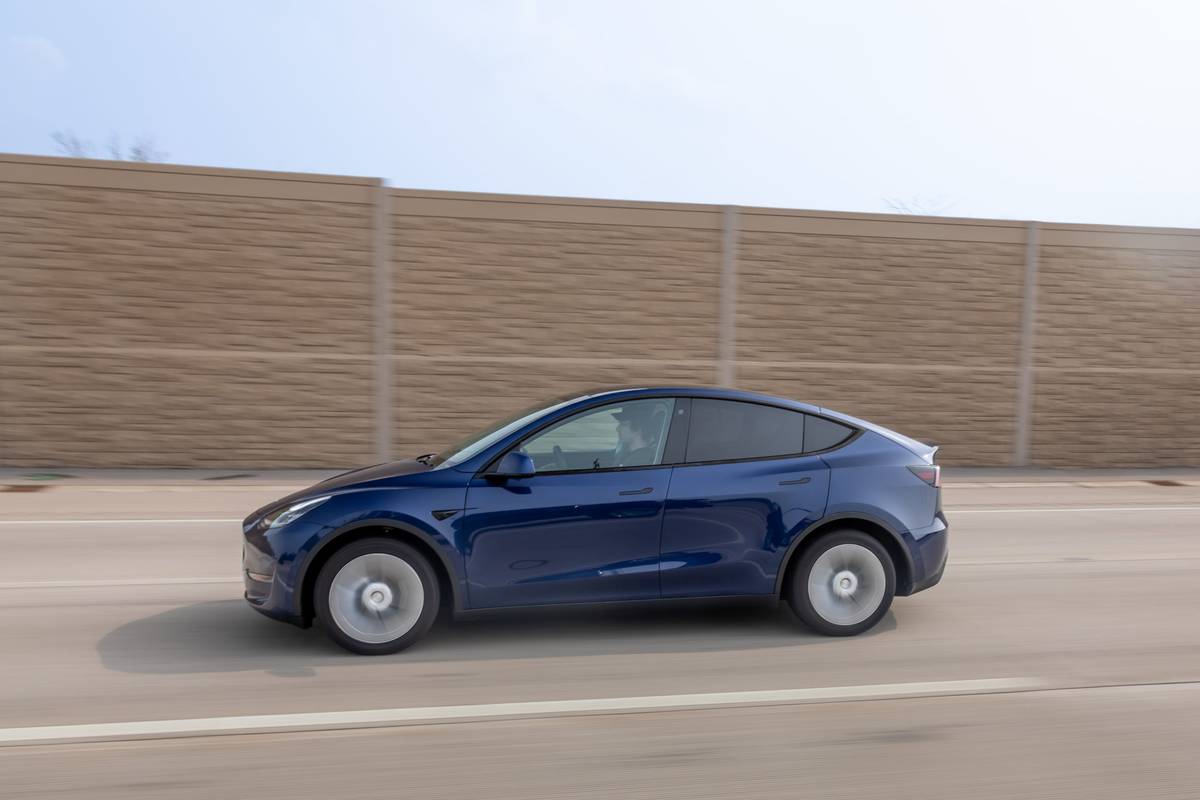
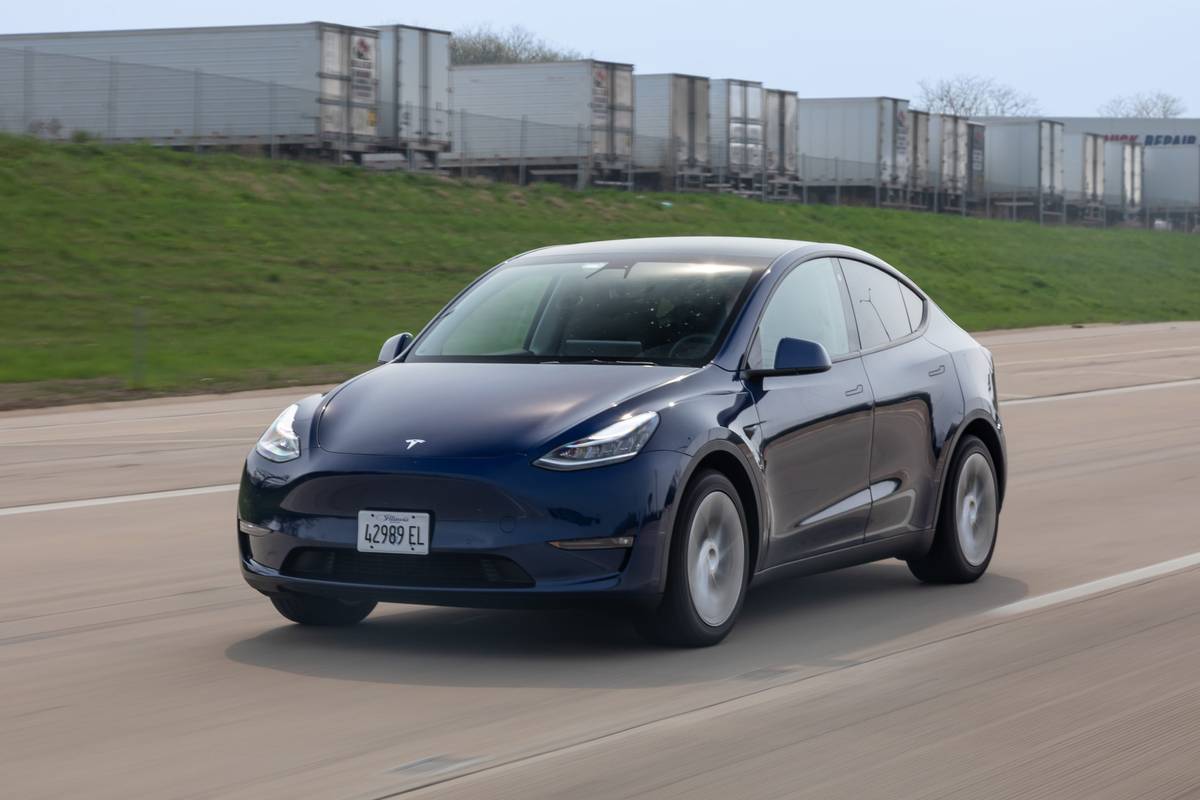
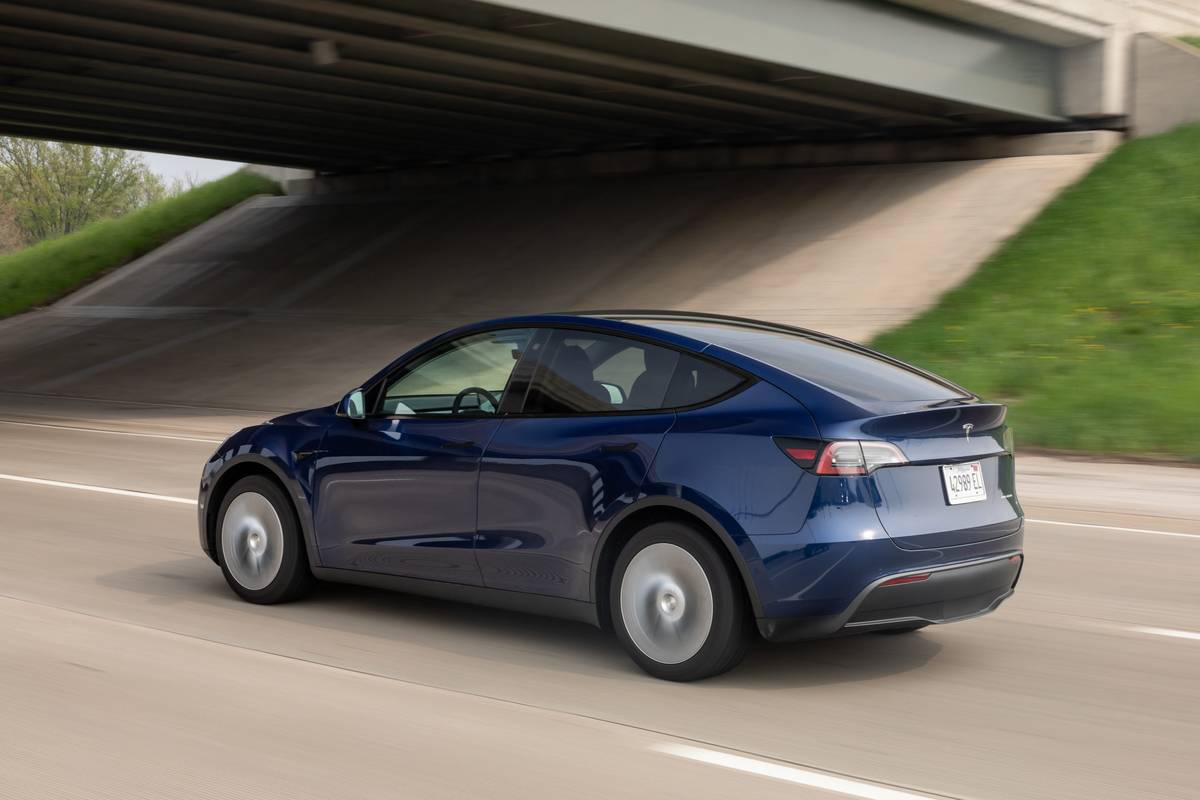



Child-seat fitment: For how much room is inside the Tesla, the Model Y doesn’t fit car seats that well because access to the Latch connectors is poor, and the head restraints require removal to fit high-back boosters or front-facing convertible seats with tall head restraints.
Value: The Model Y would have fared better in this test, even with its poor fast-charging score, in 2021 when it was a $60,000 SUV — but value is a liability for a $70,000-plus Model Y, which struggles to live up to that big price.
Then consider buying Autopilot with Full-Self Driving for $12,000, and our Model Y would be a nearly $85,000 SUV (we subscribe to the $299-per-month plan versus buying it outright). There’s also Enhanced Autopilot for $6,000 that adds a handful of features including automatic lane change, automatic parking and the remote-control Summon feature. Autopilot with Full-Self Driving wasn’t factored into this comparison because we haven’t unlocked all the features yet, so much of its semi-autonomous driving promises remain behind a curtain. What we’ve observed, however, hasn’t blown us away, and the EV6 GT-Line includes some of those features at no extra charge (explained in the Kia’s summary below).
One area where the Model Y has an appreciable advantage as a consumer-friendly EV is with its trip-planning function, where you enter a destination and the SUV tells you whether the current state of charge is good enough to reach the destination without charging; if it’s not, it routes to a Supercharger, providing an all-in travel time estimate. This function isn’t common on EVs, and while the EV6 supplies some supplemental information for trip planning, it isn’t “set it and forget it” like the Model Y.
Even so, the Model Y does not come across to us as a $70,000 or $80,000 SUV. This is especially true considering it didn’t walk away from the EV6 in some of the EV-specific testing, including efficiency and range accuracy, and wasn’t markedly more luxurious on the inside.
Research the Tesla Model Y | Search Inventory | Car Seat Check
1: 2022 Kia EV6 GT-Line All-Wheel Drive
The verdict: Though there are still asterisks to consider, the EV6 offers a compelling alternative to the Model Y not only on the merits of being a price-conscious alternative, but as a legitimate alternative.
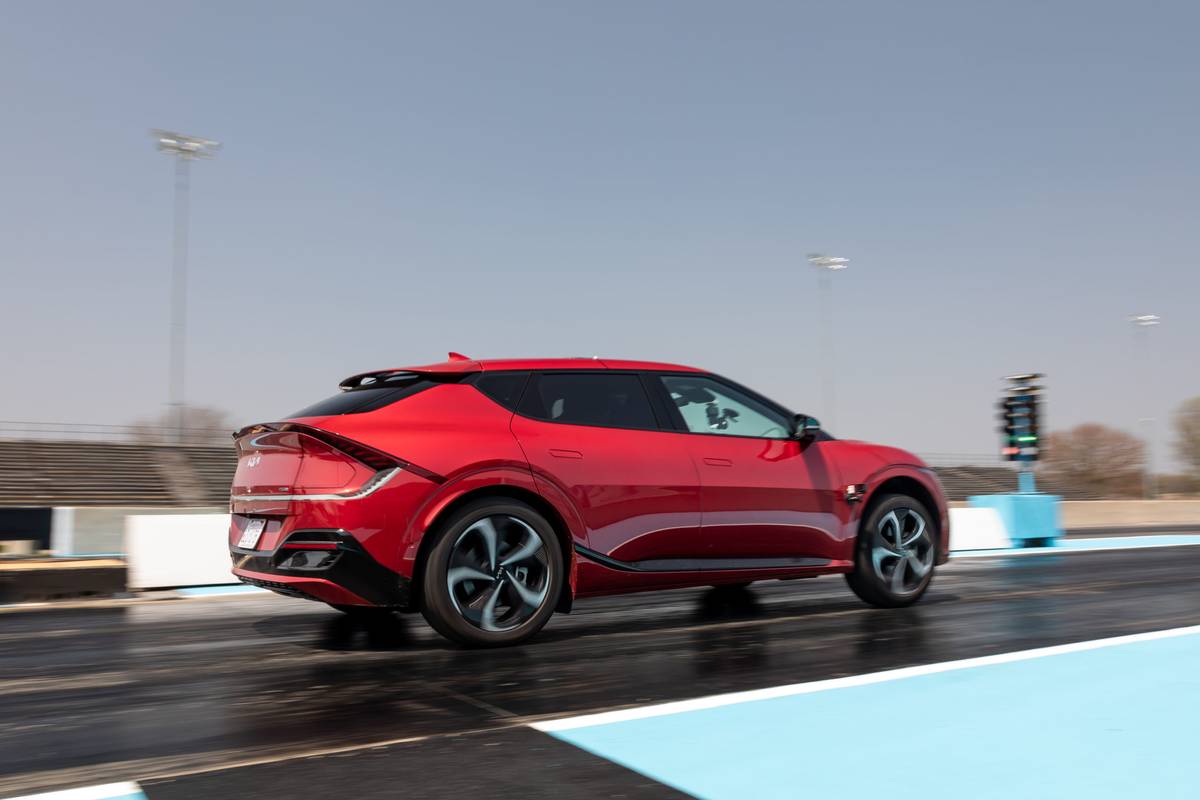
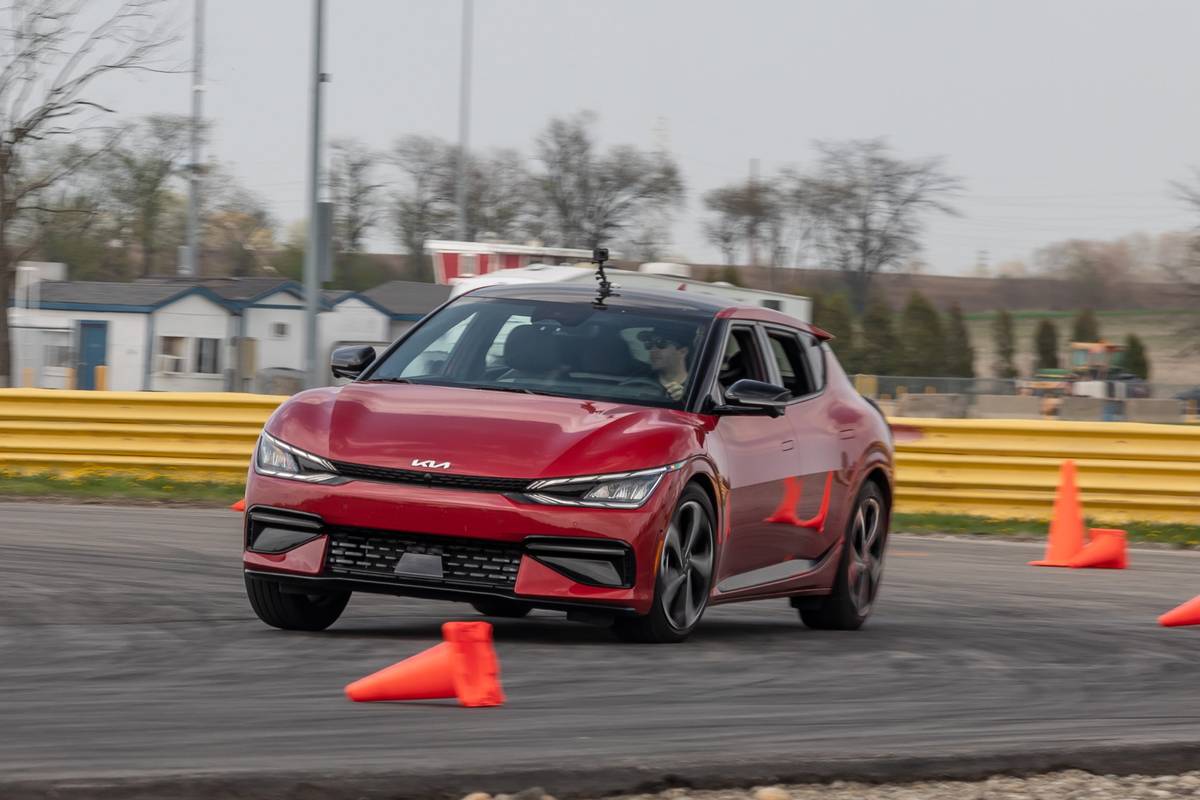

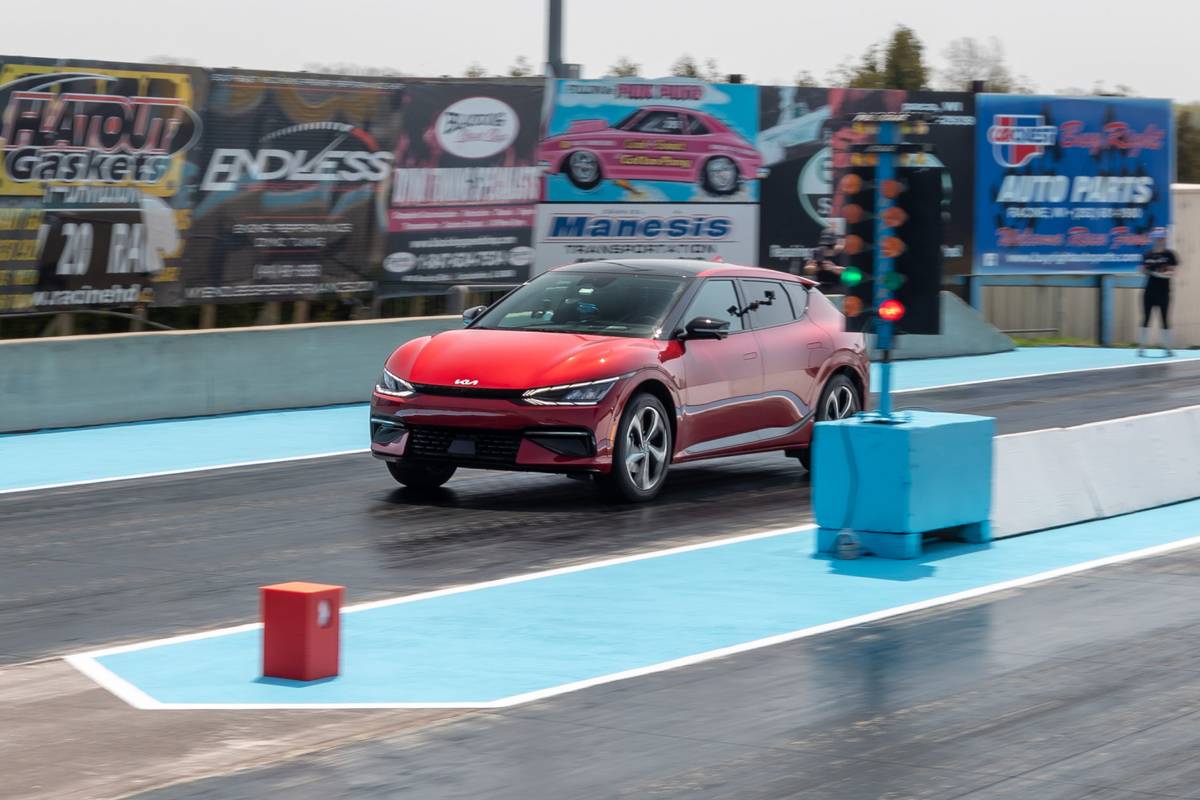






The Kia EV6 is an all-new EV, but you wouldn’t know that by how it’s not trying especially hard to reinvent the wheel. For a competitor to come along and offer similar EV capabilities as the Model Y without the potential trade-offs would be quite the feat, yet that’s what’s happening with the EV6. Absent of foreign controls, interfaces or operation, it’s simply a good electric SUV that’s easy to use. Where the EV6 most outperformed the Model Y is in our fast-charger testing, an area for which the Model Y had previously reigned supreme in this price range and class.
The EV6’s 800-volt architecture (versus the 400-volt systems in most EVs, including the Tesla) is unique in this price range and promises faster DC fast charging, and it delivered a significant advantage versus the Tesla in our testing. Where the EV6 falters, however, remains potentially deal-breaking because it involves whether or not you can comfortably fit in the driver’s seat, which isn’t an issue with the Tesla. It also surprised us that the EV6 had more severe visibility issues than the Tesla because the Model Y’s natural visibility is quite poor.
Our Test Vehicle
- As-tested price: $57,410
- 0-60 mph: 4.69 seconds
- Quarter-mile acceleration: 13.25 seconds at 102.21 mph
- EPA-rated efficiency (mpg-e): 105
- EPA-rated range (miles): 274
The Good
DC fast charging: There are many variables that affect fast-charging rates (battery and ambient temperatures), which is why we performed our test in as close to similar real-world conditions as possible: same day, same time, similar location (3 miles apart) and after a similar drive. In short, the EV6 took 18 minutes (10 minutes less than the Tesla) to charge from 18%-80% and added nearly the same number of miles of range.

Considering similar maximum charge rates, what happened? The Tesla pegged at 250 kW right off the bat, but it gradually fell to its bottom 52 kW at the end of the test, taking 28 minutes to charge from 18%-80% and adding 164 miles of range. The Kia never accepted more than 187 kW, but it also never dropped off a cliff like the Tesla; its flatter charge curve remained above 150 kW for most of the test, charging from 18%-80% in 18 minutes while adding 162 miles of range. In the end, the Kia averaged 9 miles of range per minute versus the Tesla’s 5.9 miles of range per minute.
We’ve had poorer fast-charging results from the EV6 in colder weather, but for our Tesla, the slower time it took to charge was typical with what we’ve experienced during our roughly 4,600 miles of ownership so far, including a half-dozen charges on 250-kW Superchargers.
Value: The EV6 packs a whole lot of punch for less than $60,000. In addition to being a well-rounded EV, it includes extras that take advantage of it being an EV. Unlike the Tesla’s fart noises, video games and loudspeaker, the EV6 GT-Line includes its vehicle-to-load feature that turns the EV6 into a massive portable battery that can power just about any household device through a 120-volt AC household outlet under the backseat cushion or via an adapter that plugs into the charge port. We even charged our Tesla with the EV6’s power adapter (slowly, of course). The Model Y has no power outlets other than six USB-C outlets. Also, some buyers may qualify for the $7,500 federal tax credit that’s available on the EV6 but is no longer available to Tesla.
There are also features that partially perform what the Tesla does as part of the Model Y’s $12,000 Full Self-Driving suite. On the EV6 GT-Line, this includes an automatic lane change feature where the EV6 changes lanes with a press of the turn signal stalk; we say “partially” because the Tesla has additional functionality, including the ability to alert and ask to pass slow-moving cars when a slowdown in the lane is detected. The EV6 also has a parking assist feature that, via the key fob, can move the SUV in and out of a tight parking space without the driver being in the seat. Again, Tesla has more capabilities with its Smart Summon feature for navigating more complex scenarios, but the EV6 offers the bulk of what you’d use this feature for without it being part of an additional package as it is for the Model Y.
User interface: Using the EV6 takes little acclimation. This stands in stark contrast to the Model Y, which requires a dive into the owner’s manual or YouTube to figure out, “How do I …”
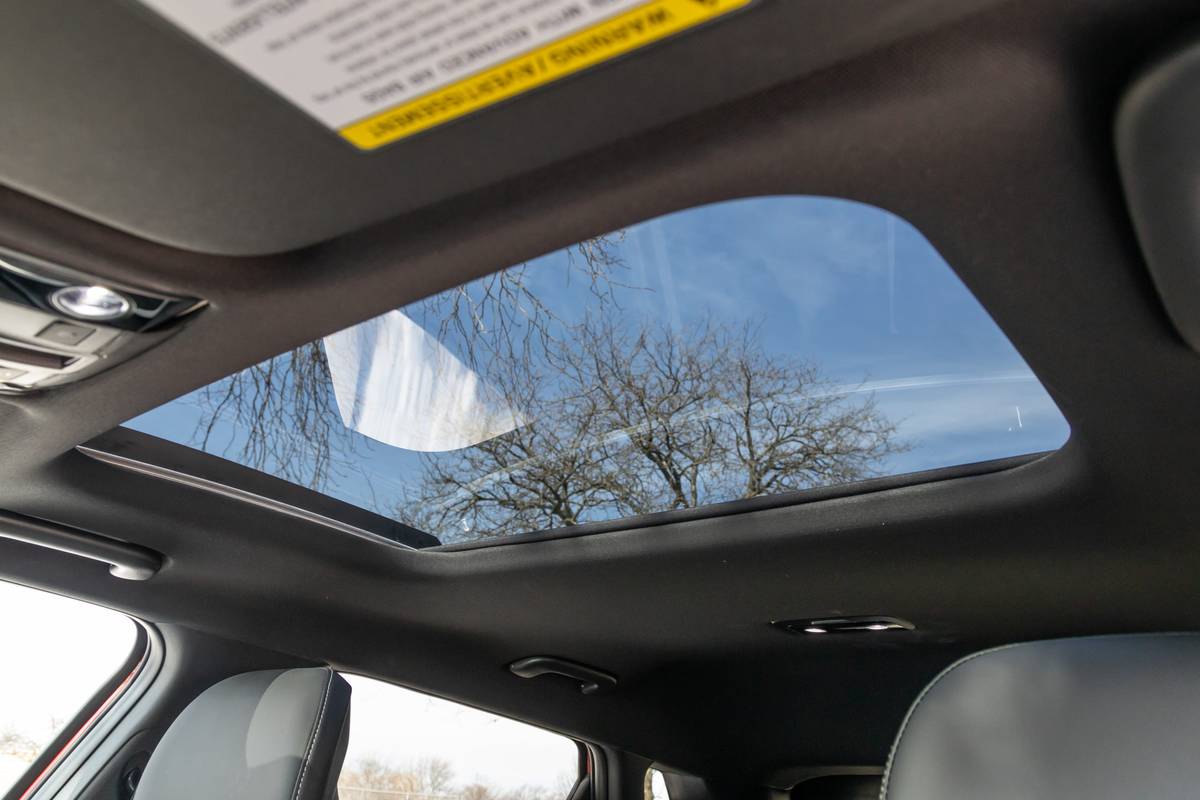
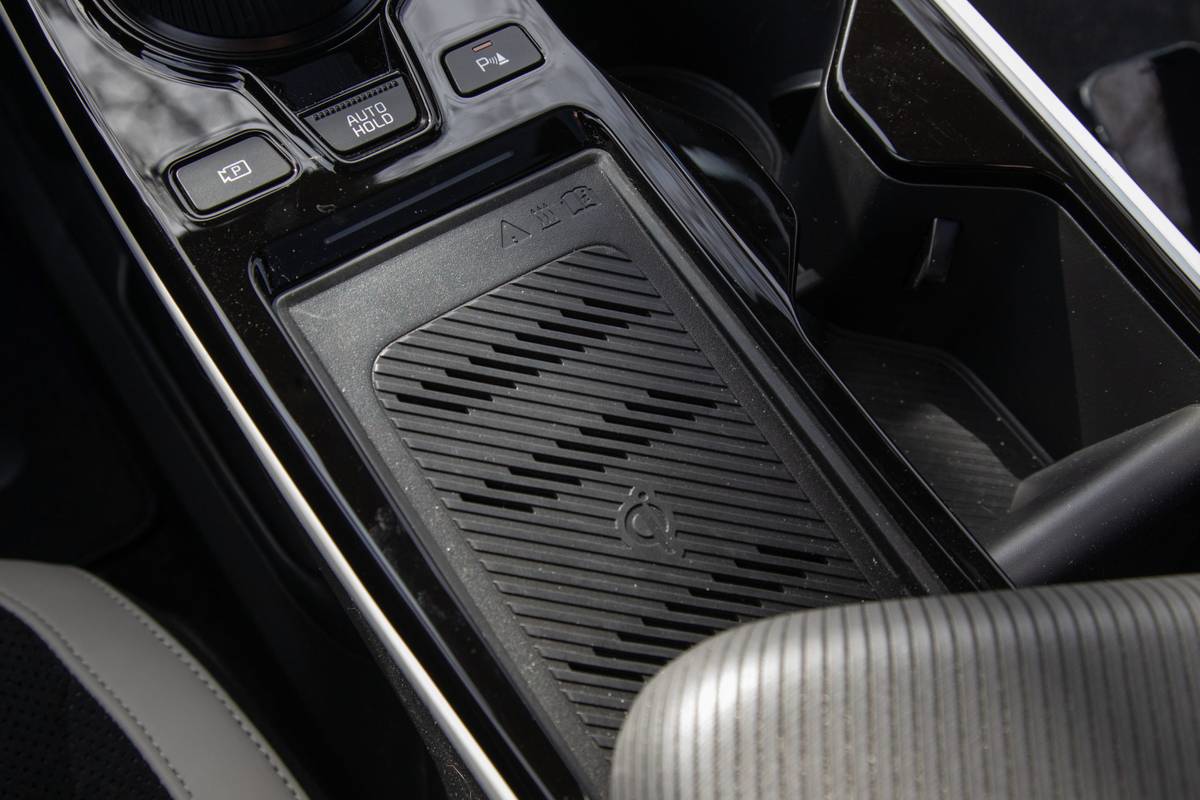
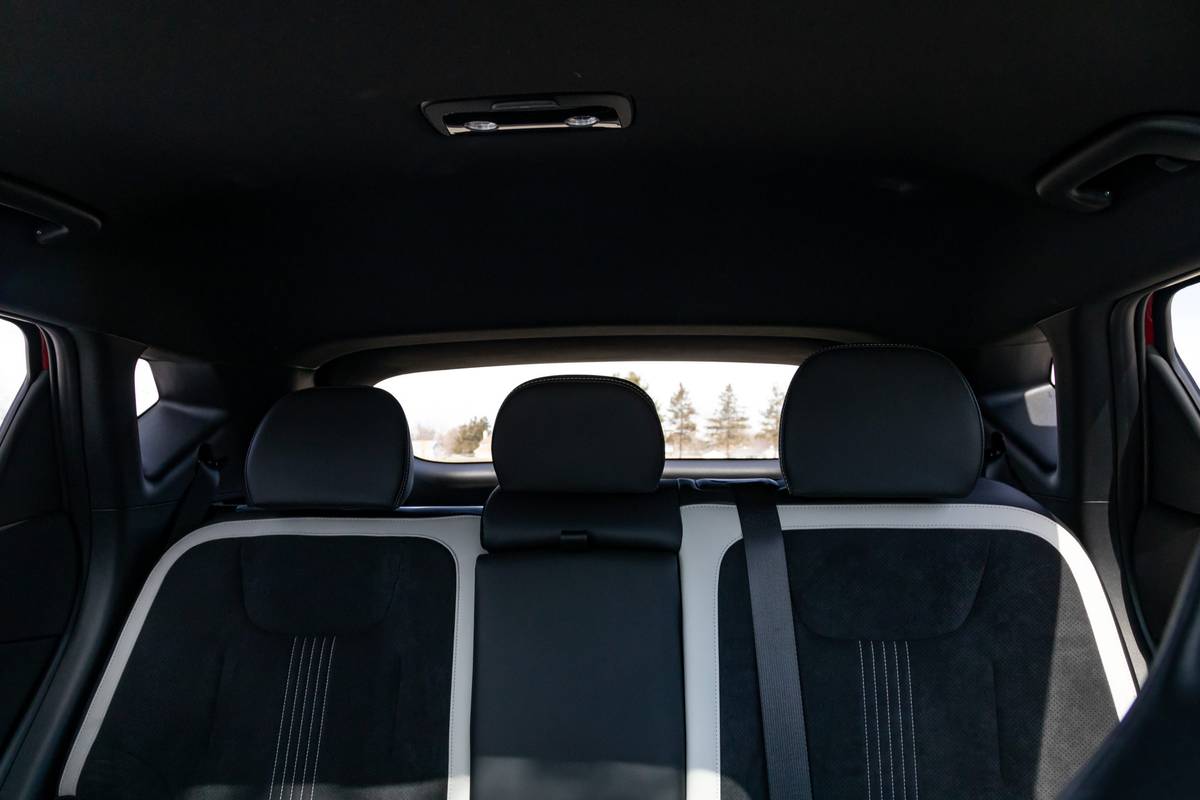

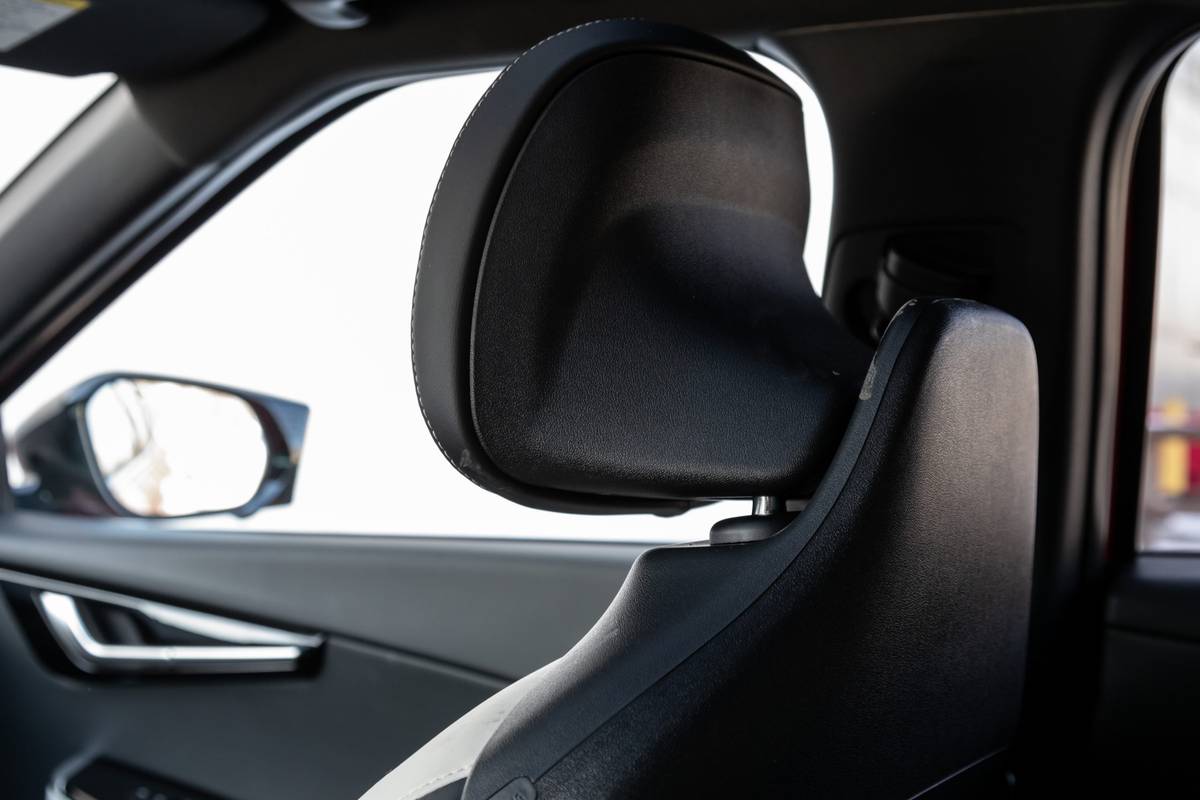
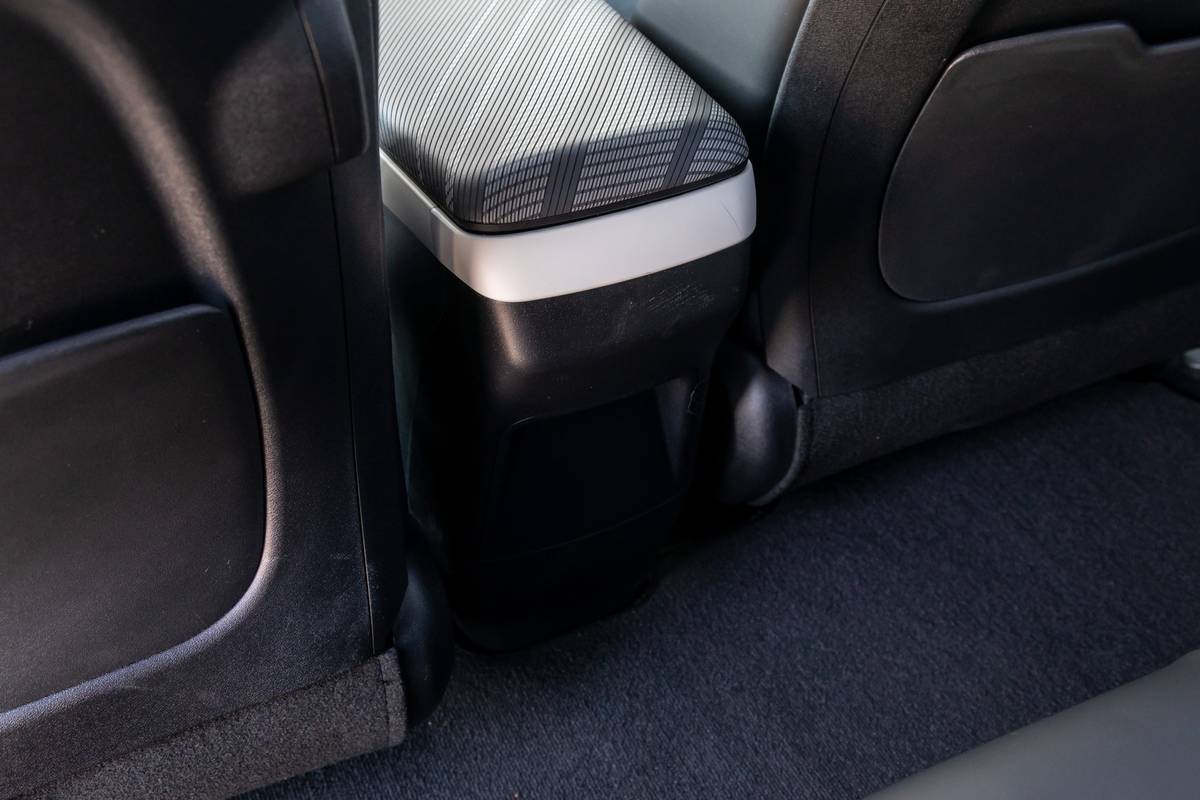

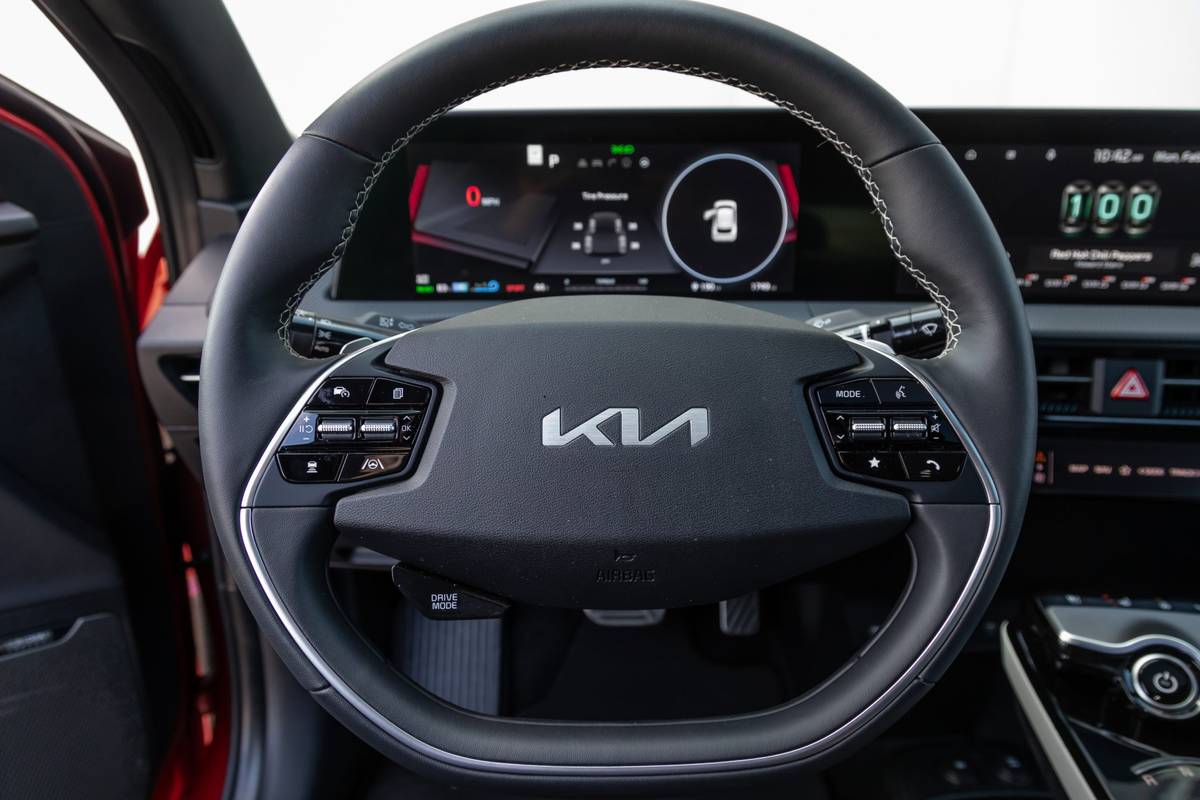
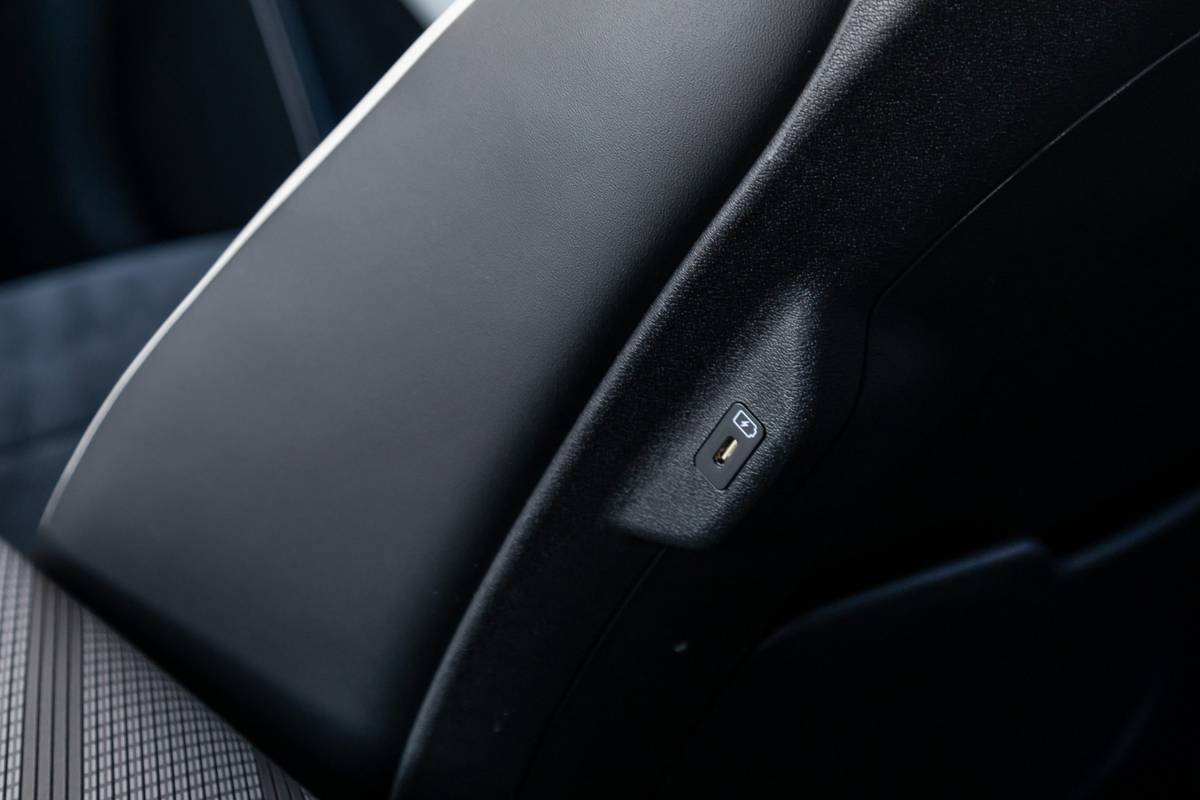
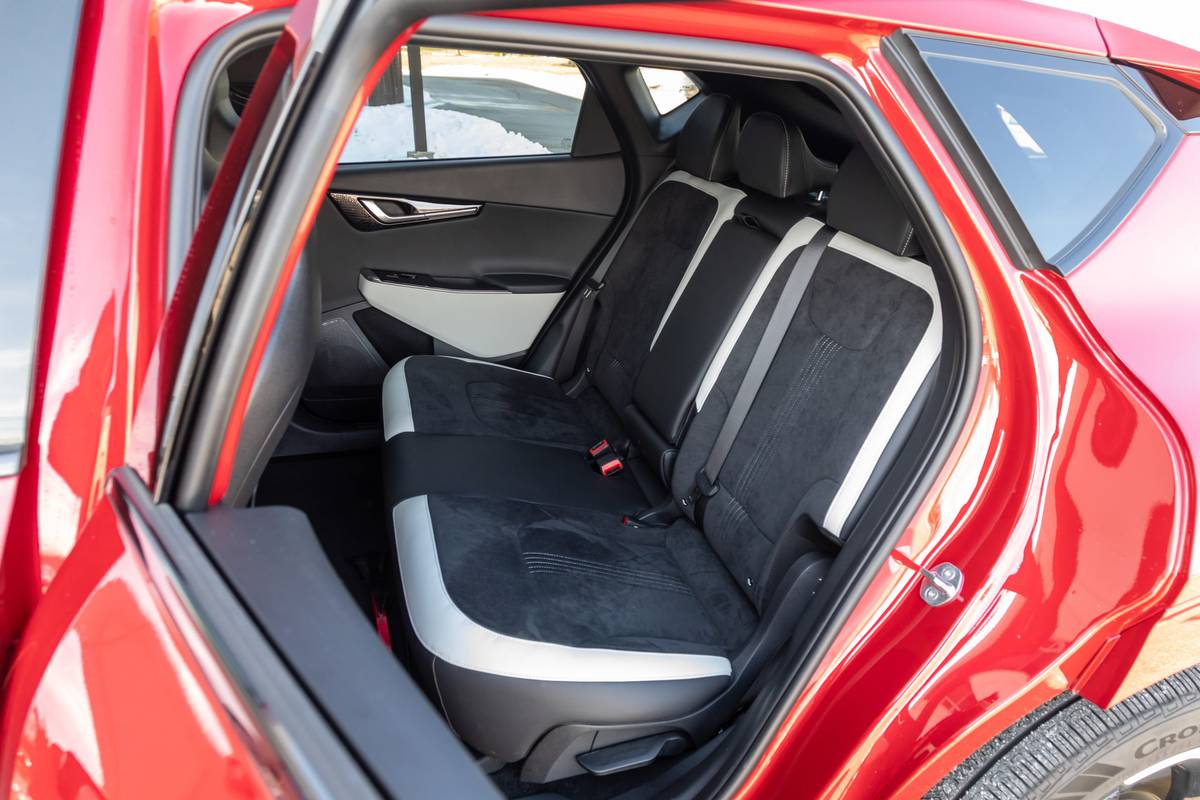

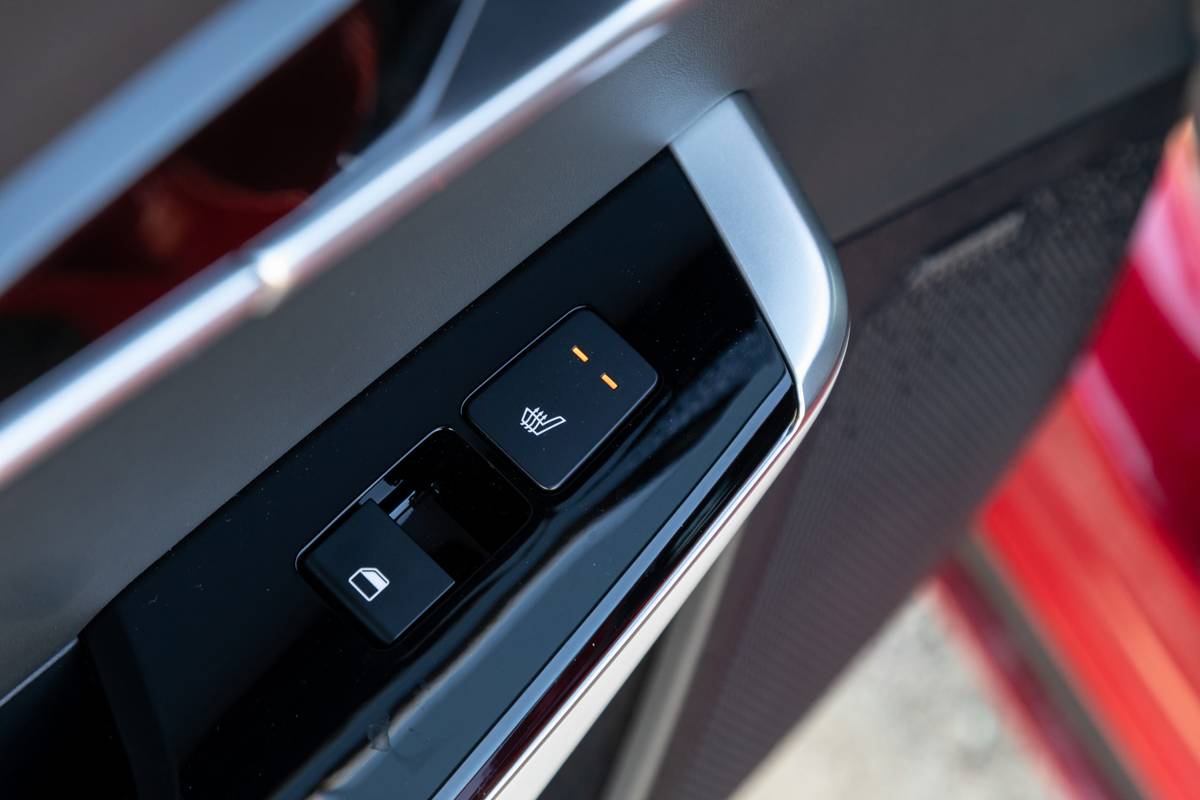
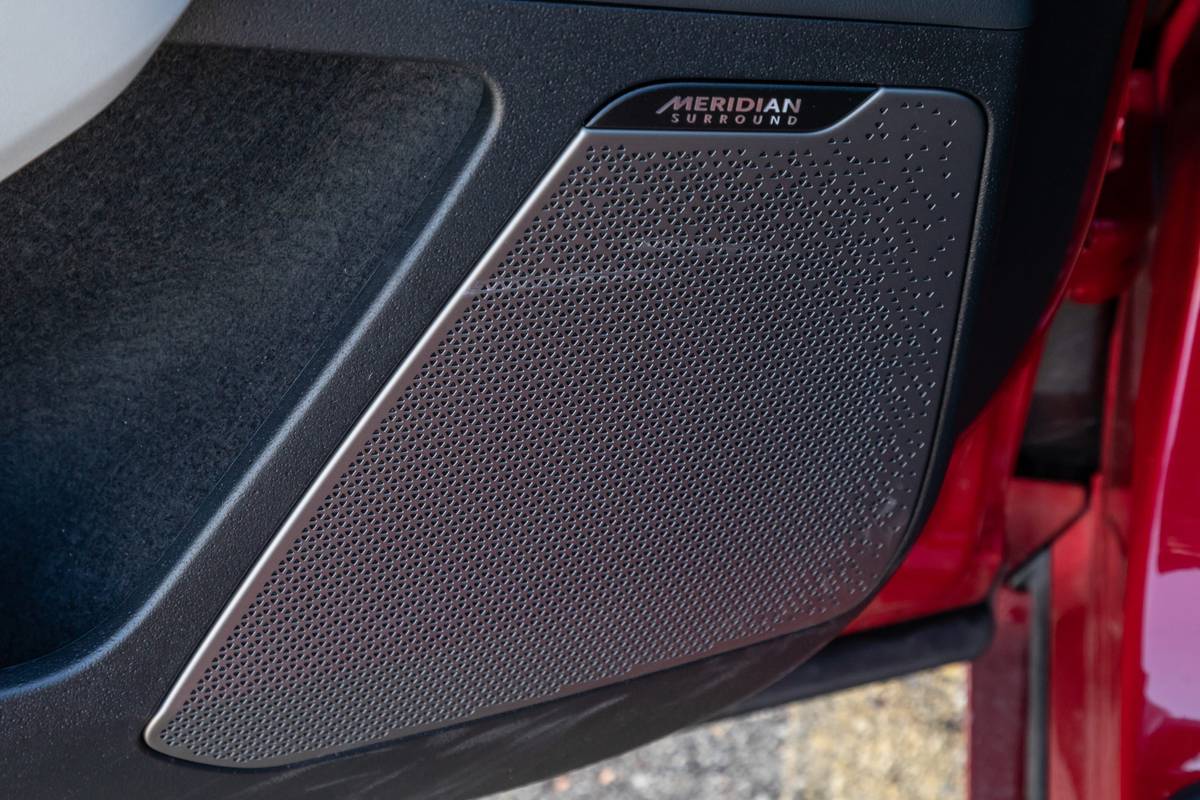

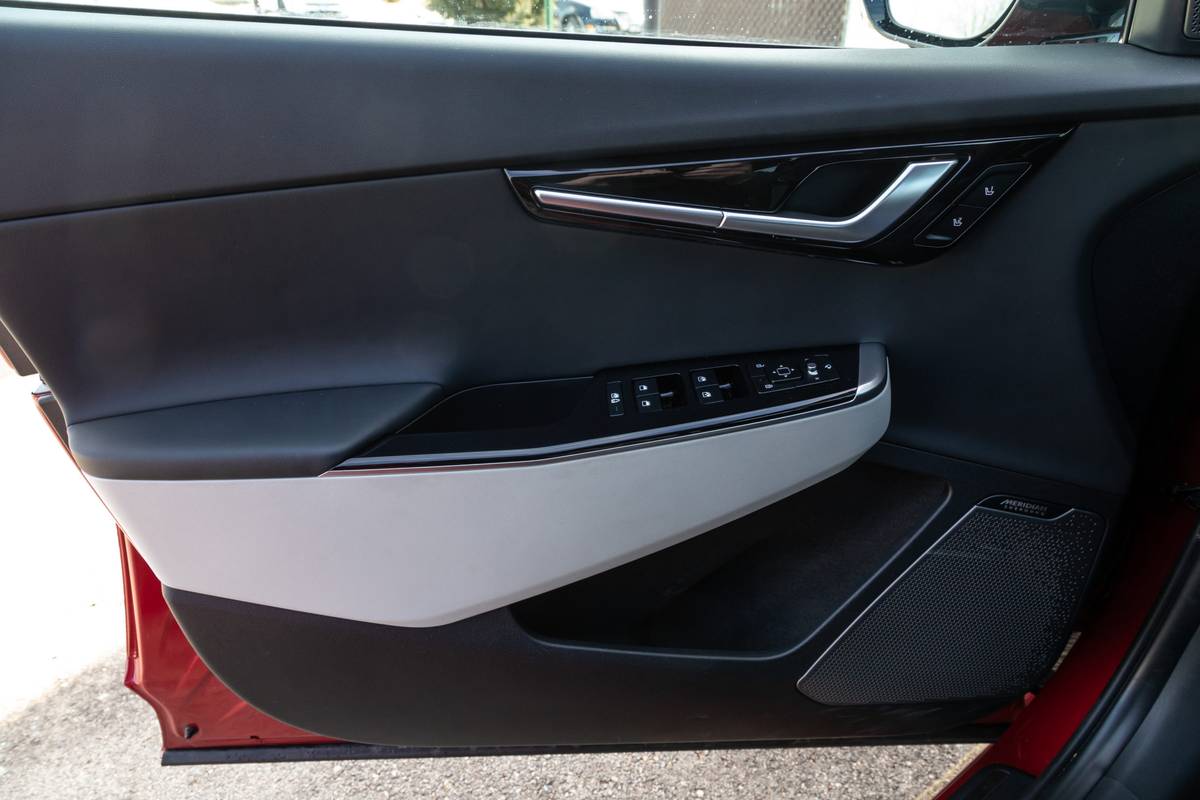
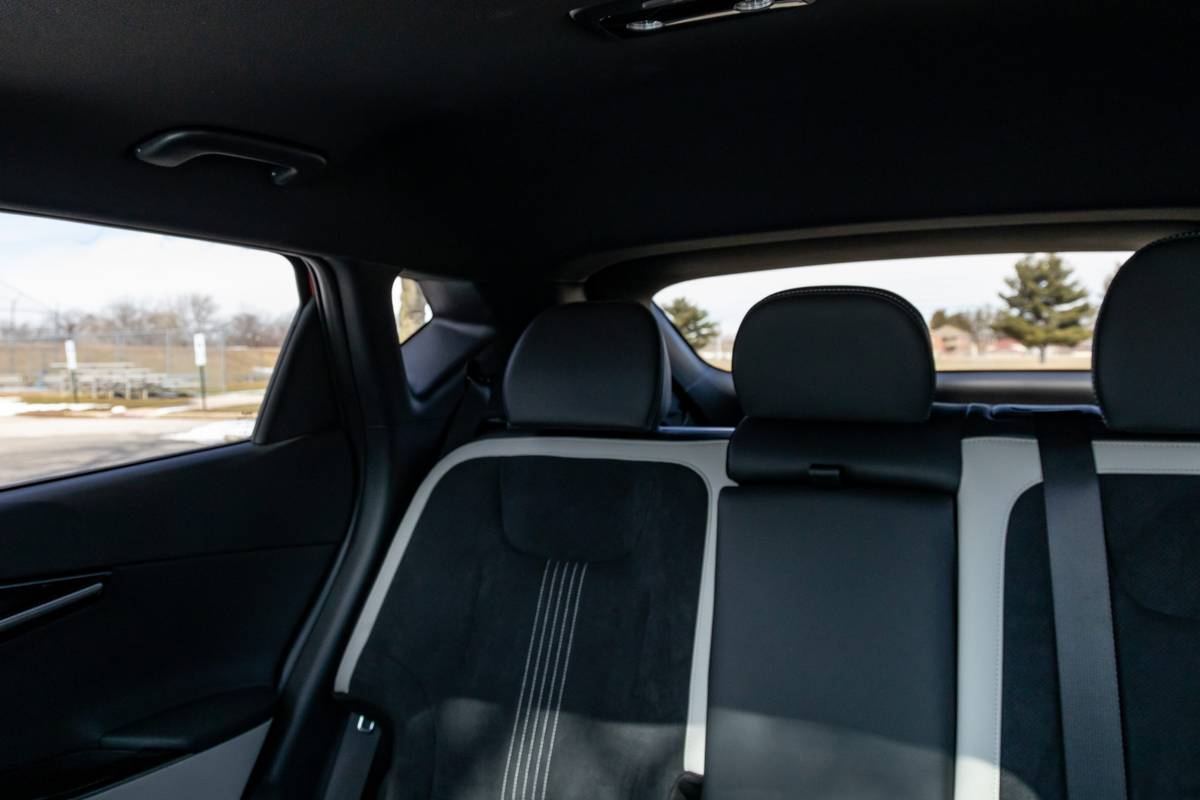
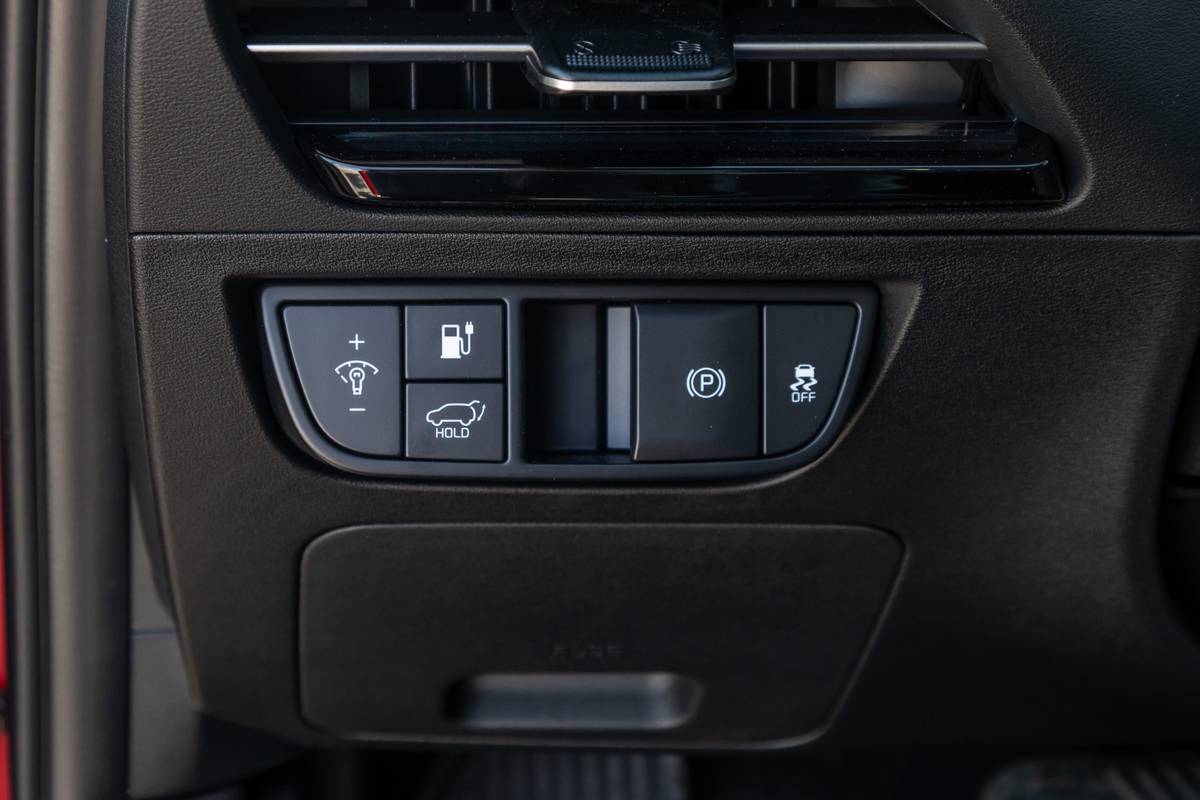

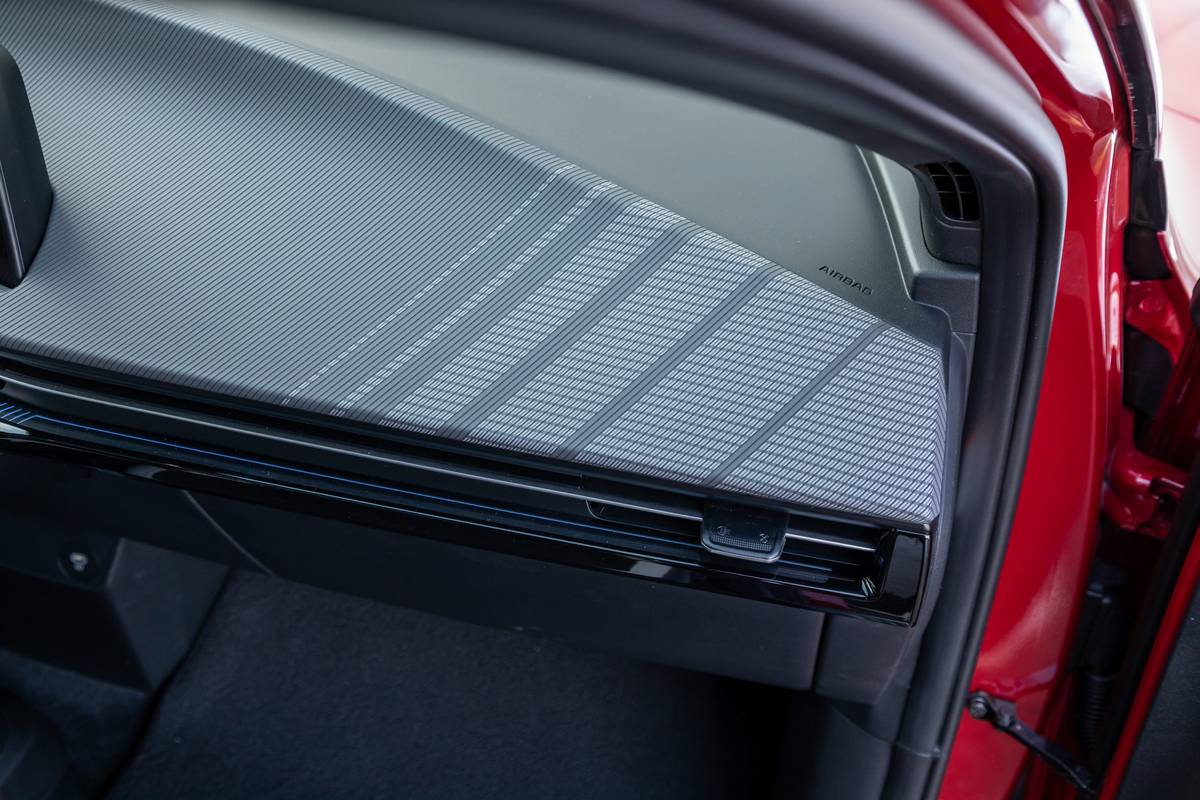
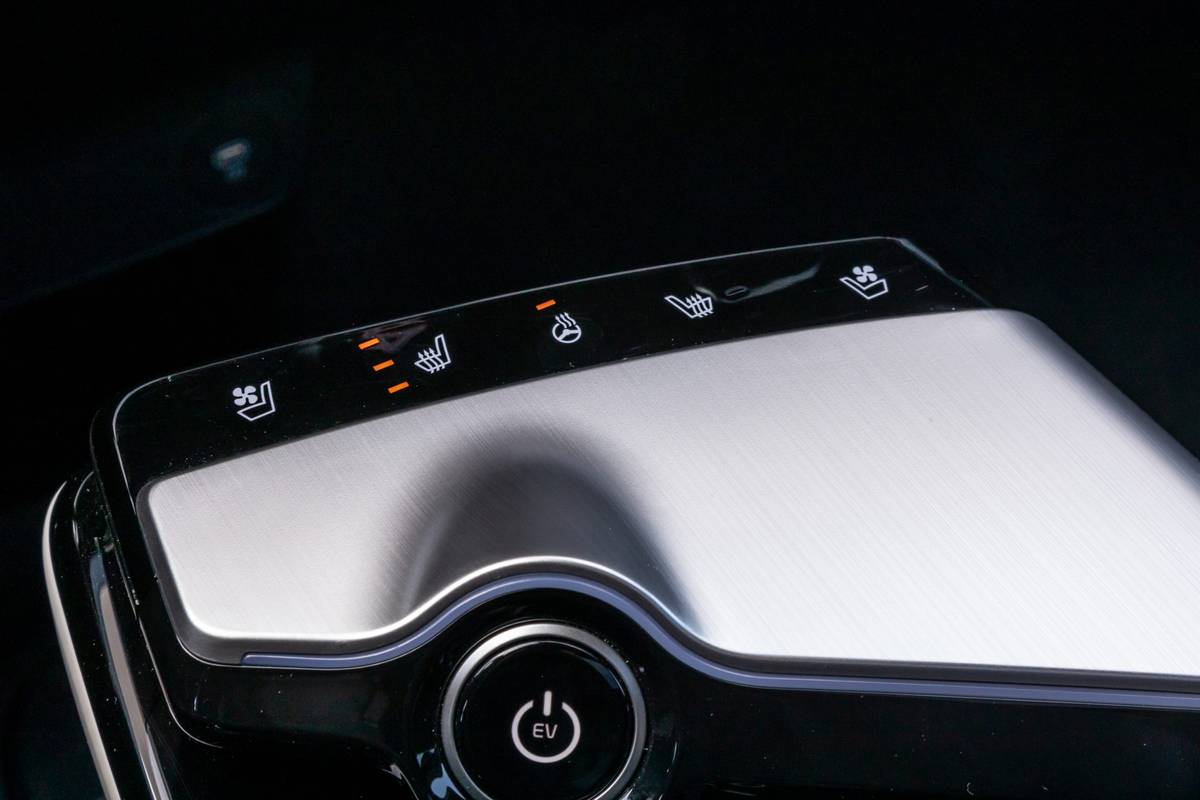
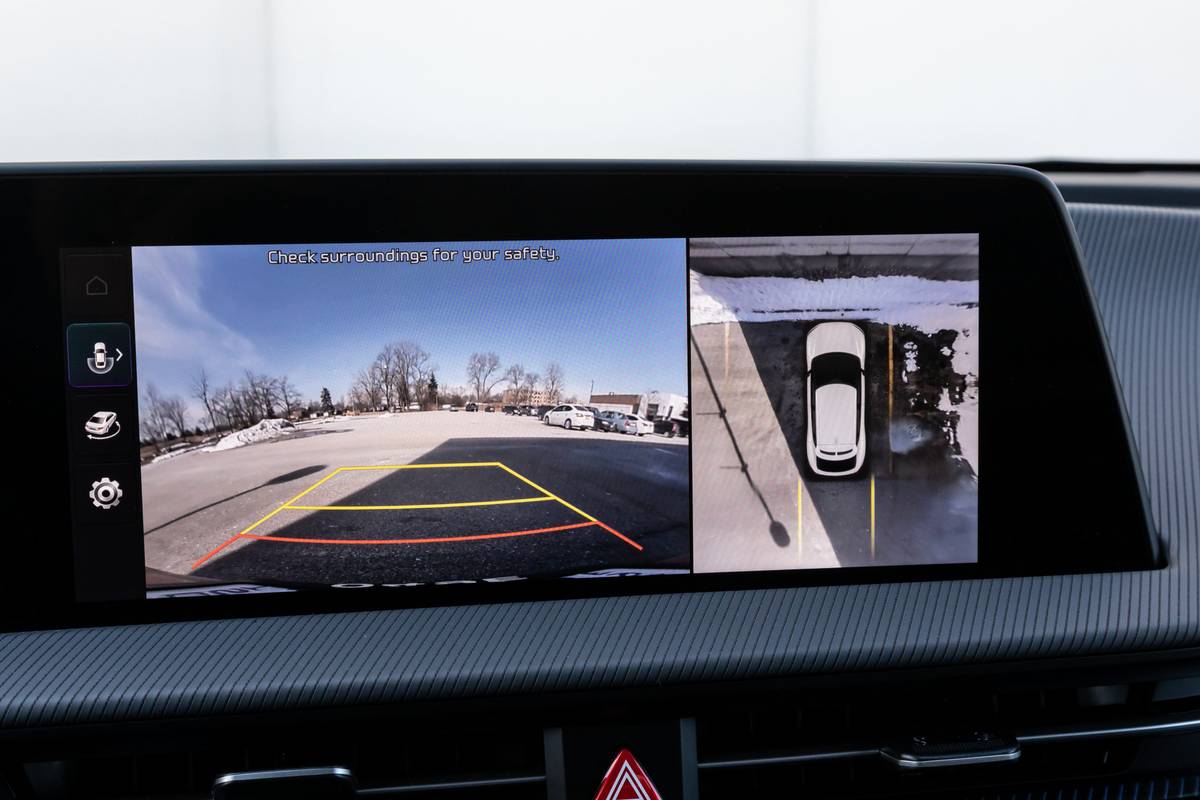
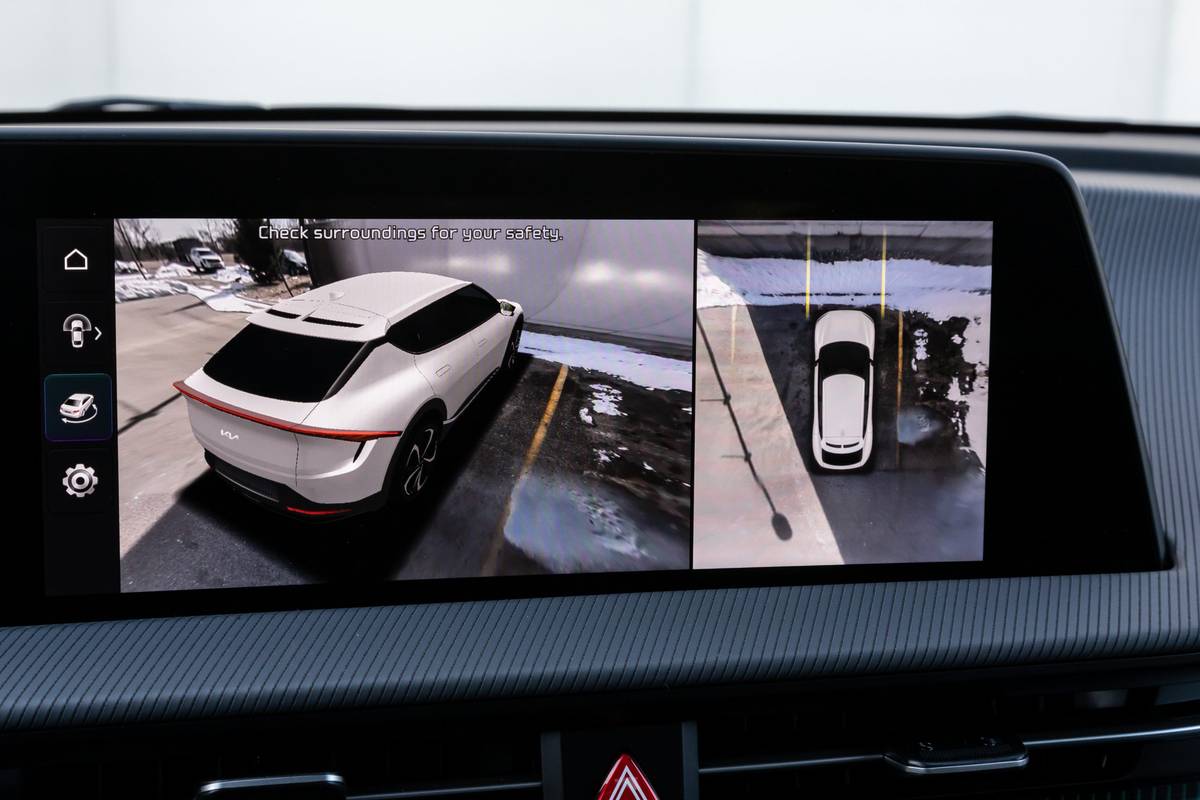
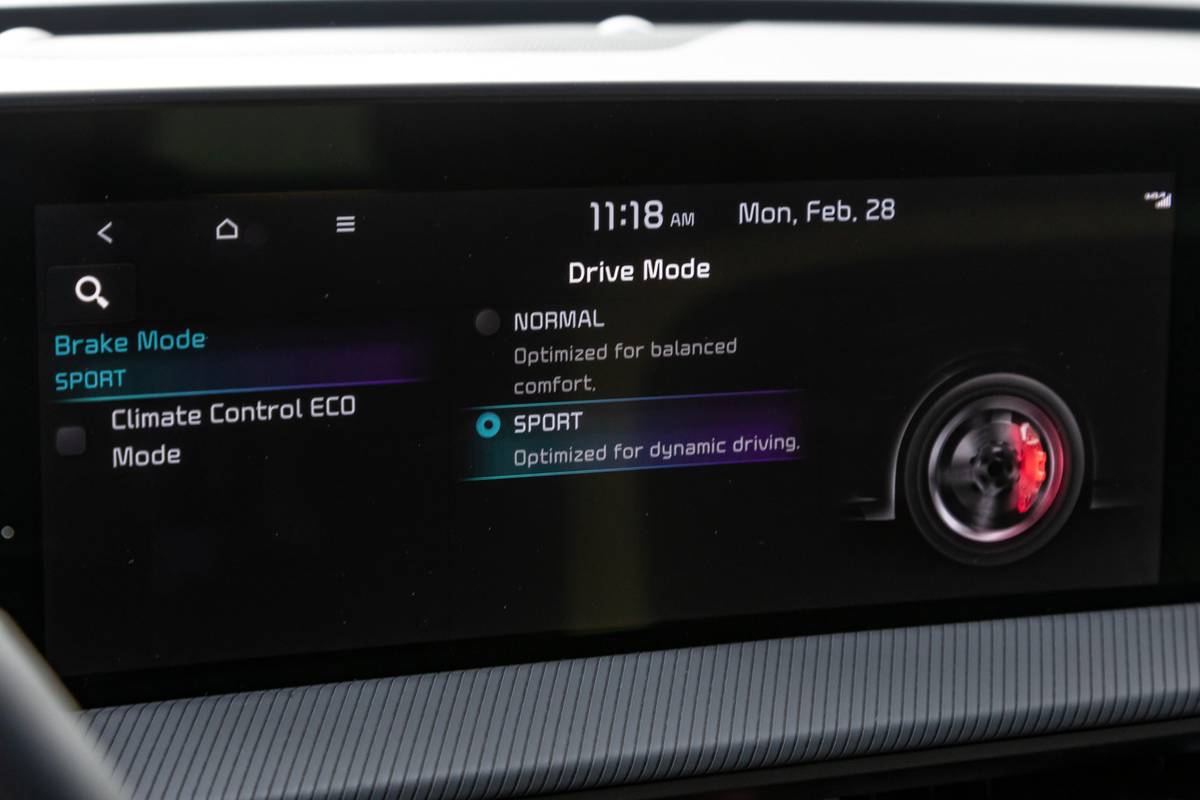

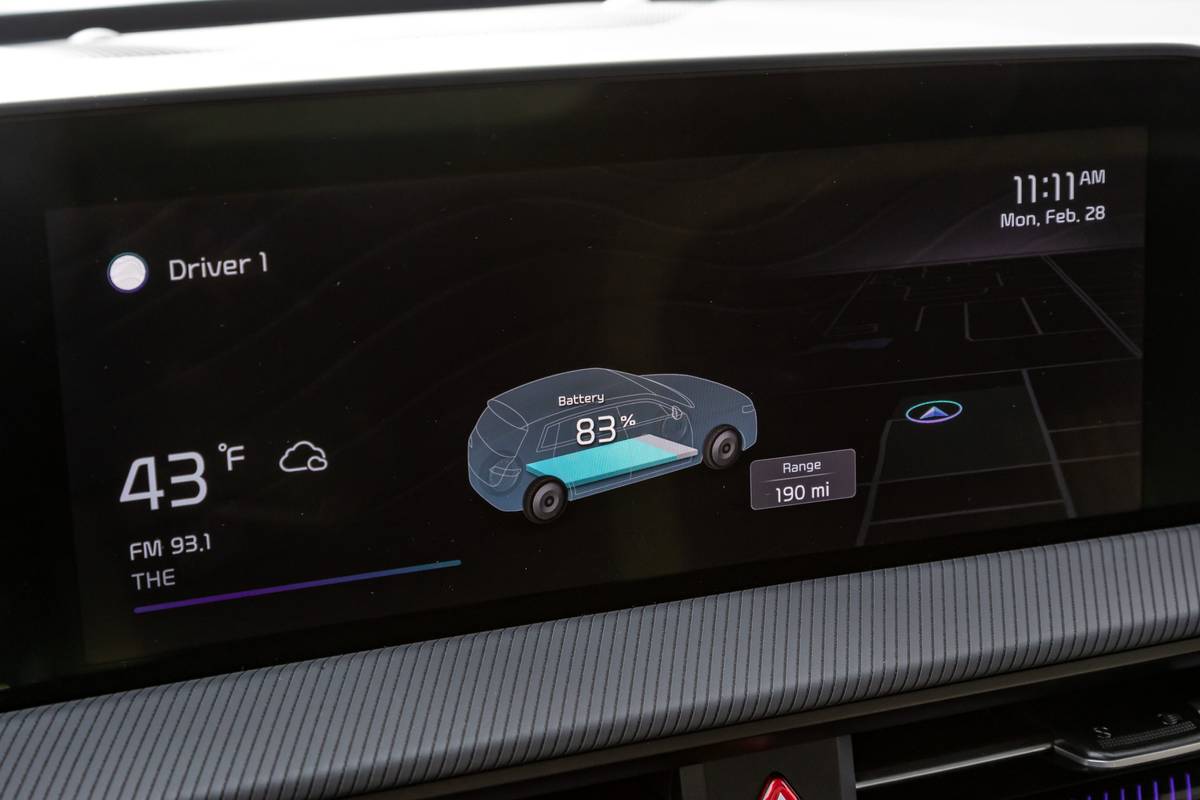
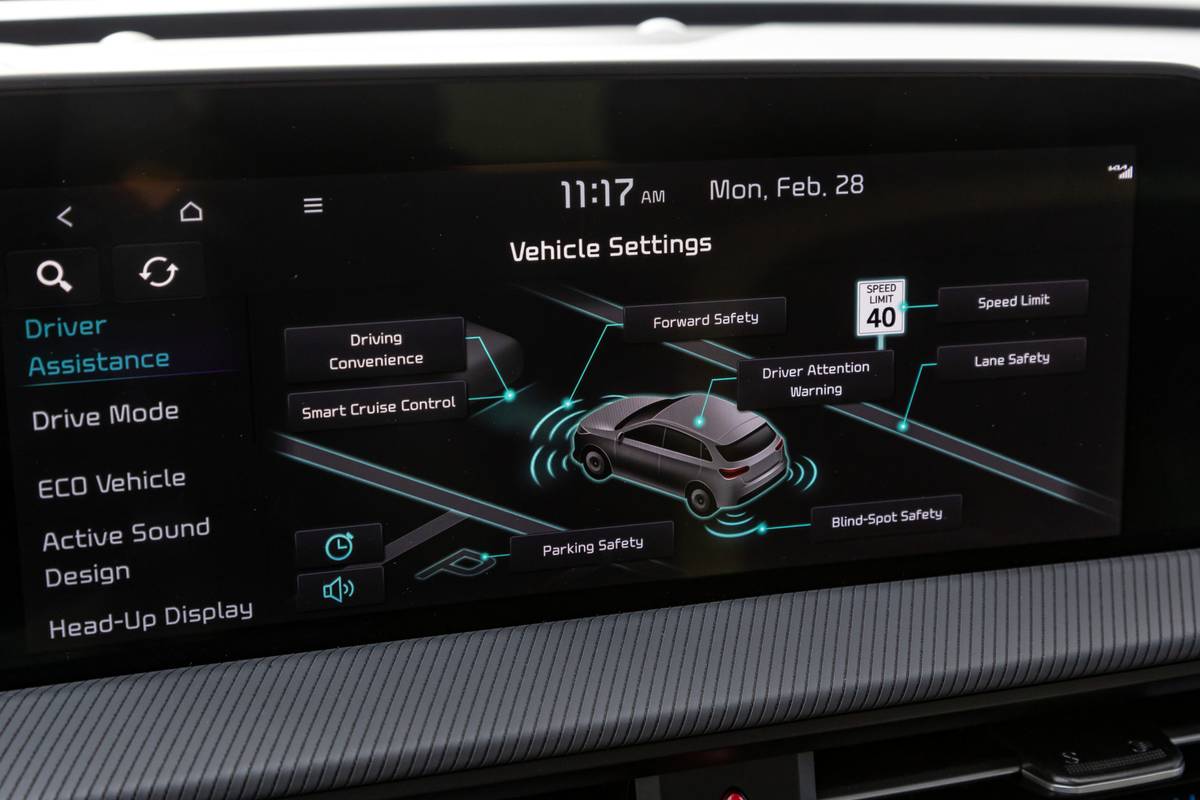
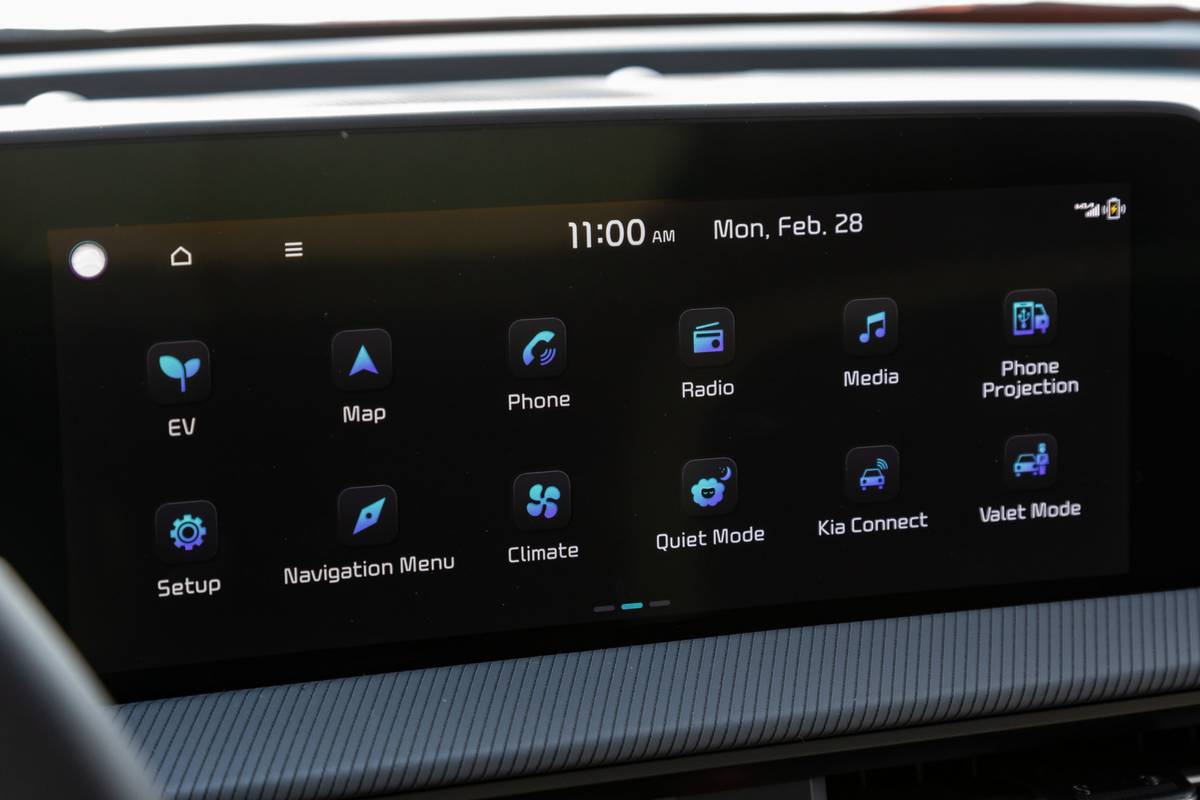
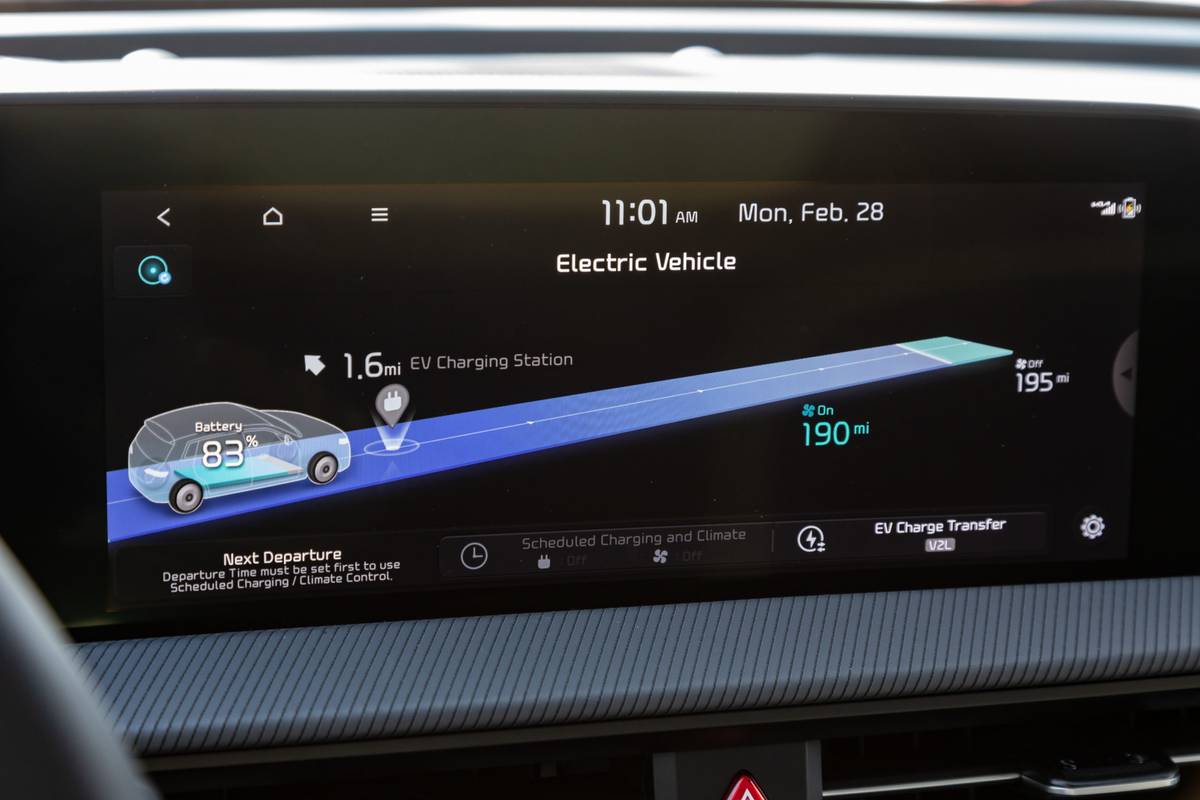
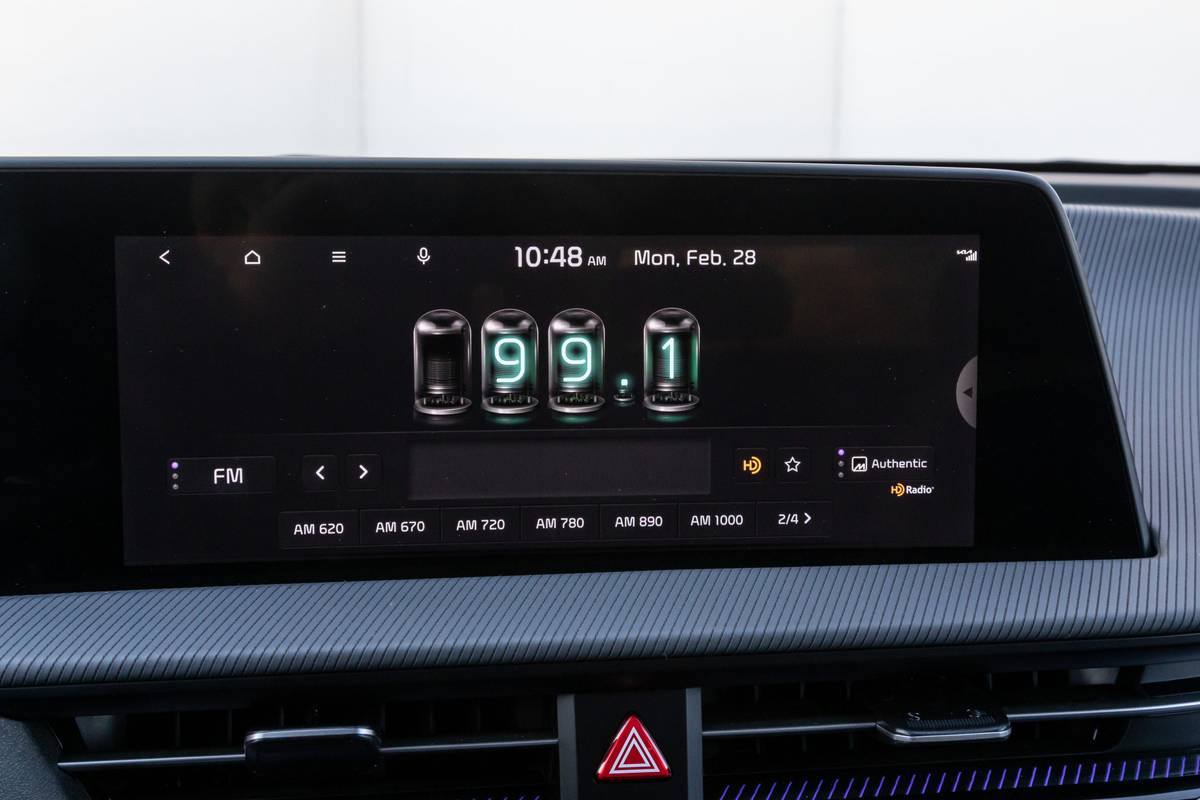
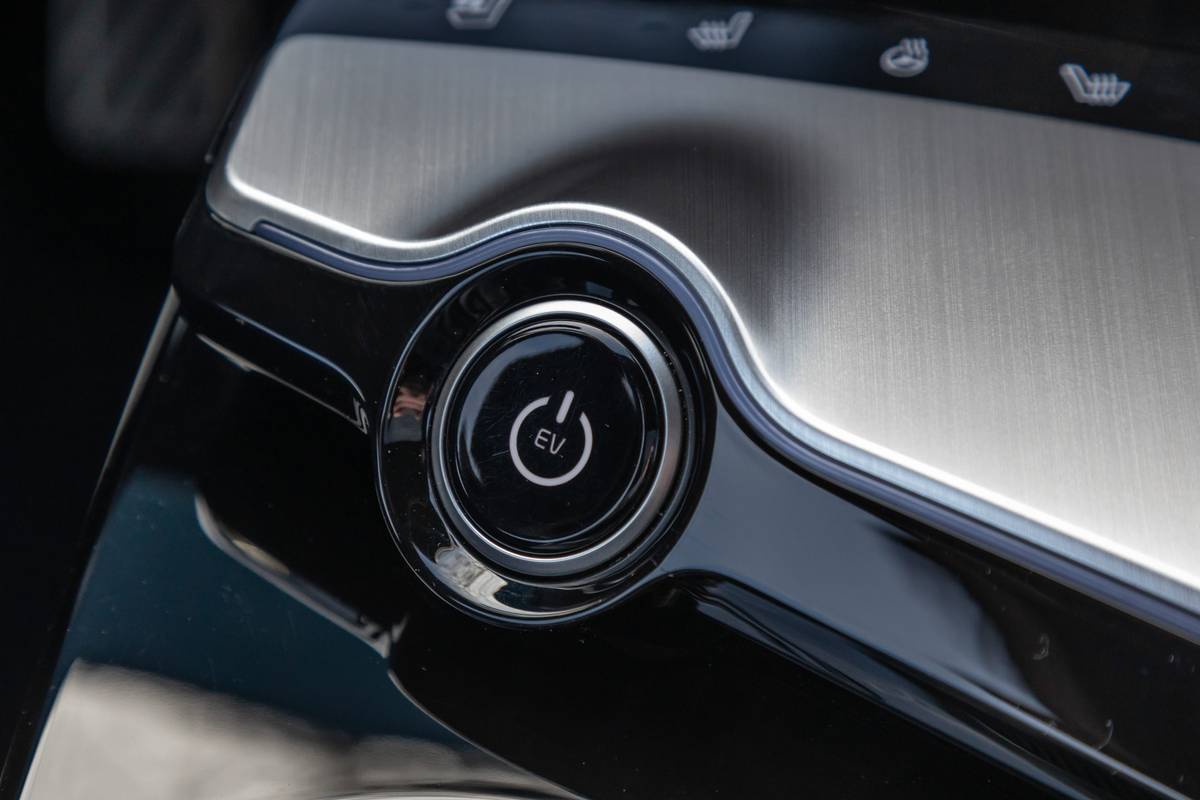
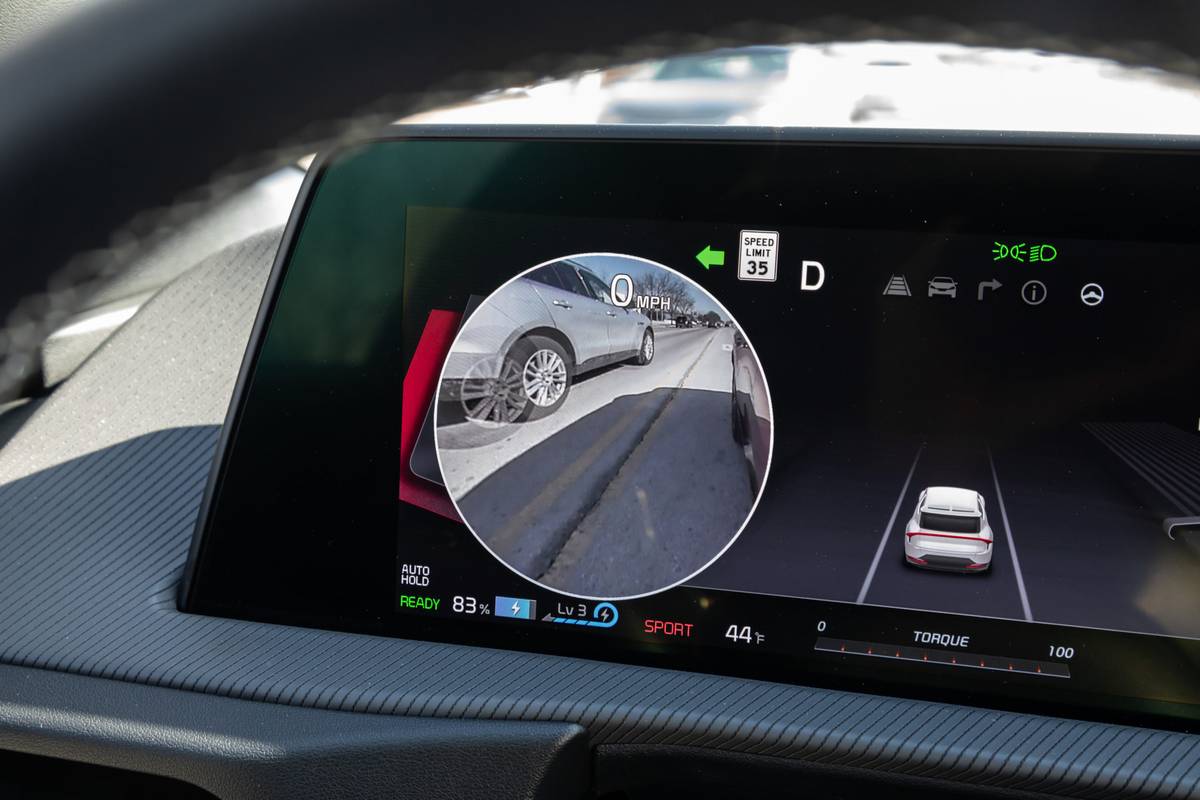
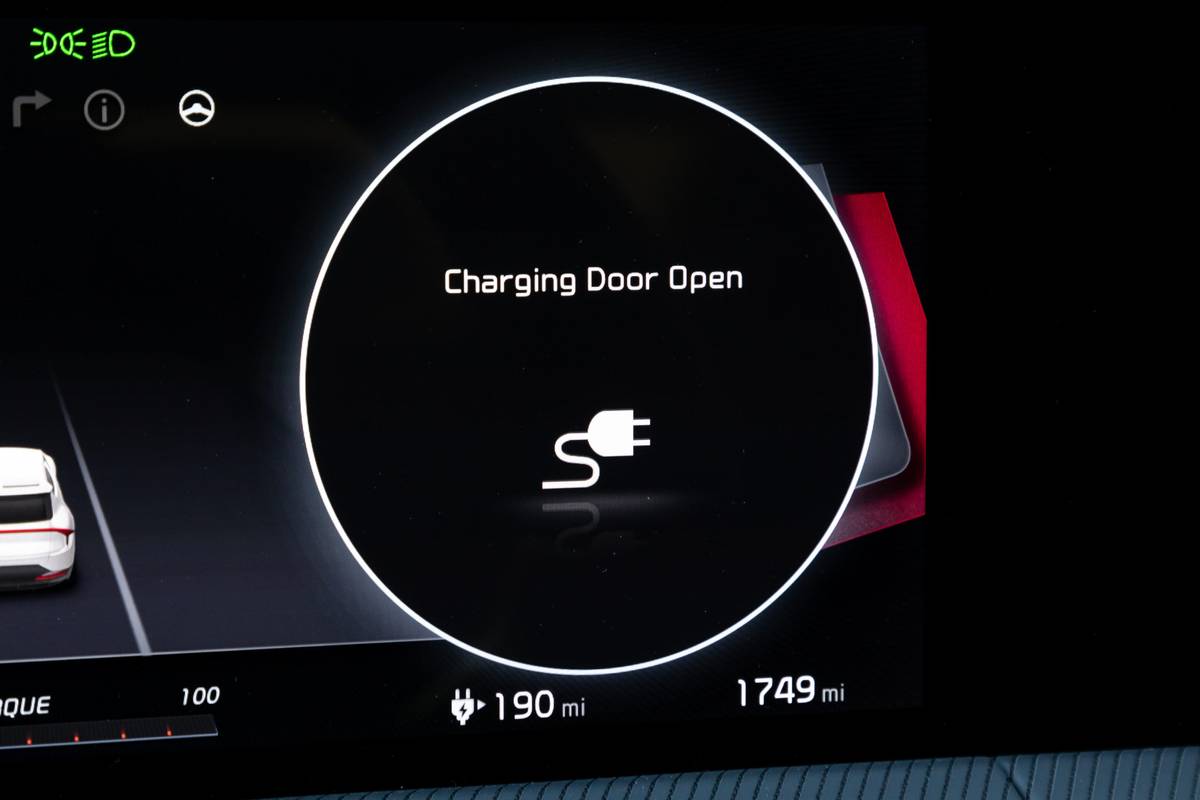
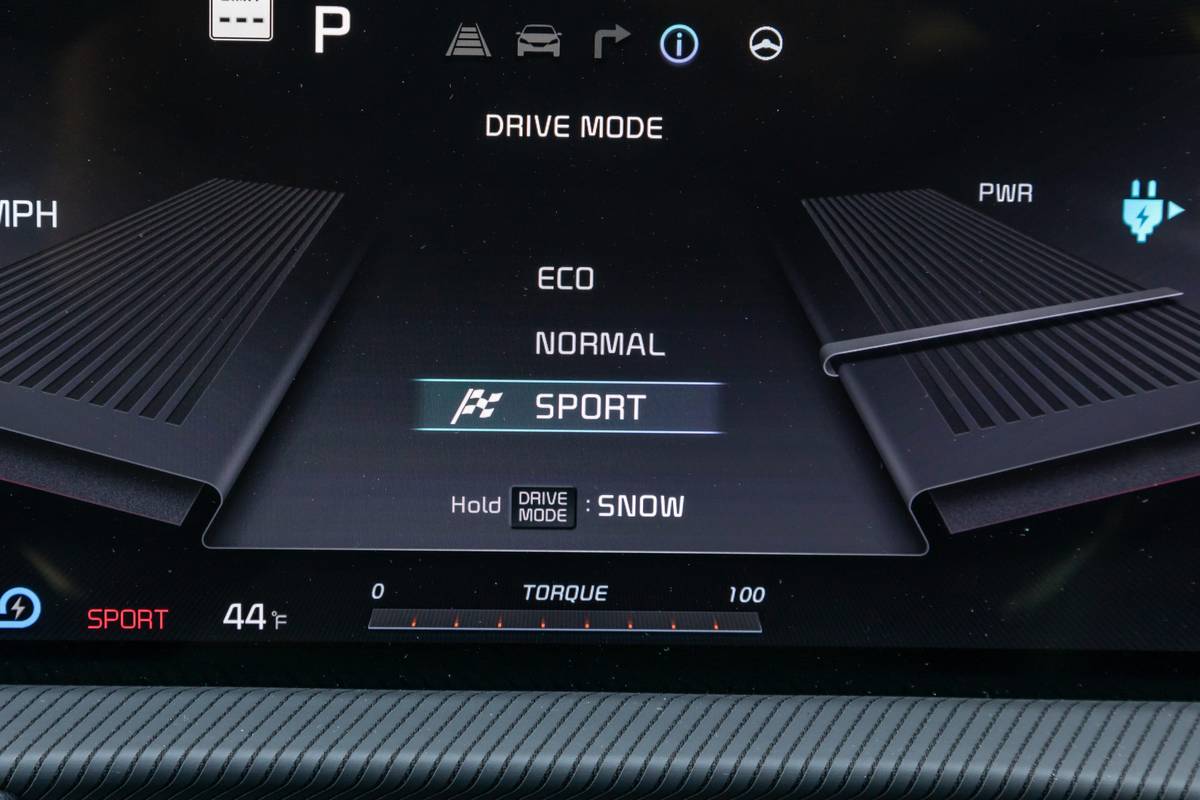
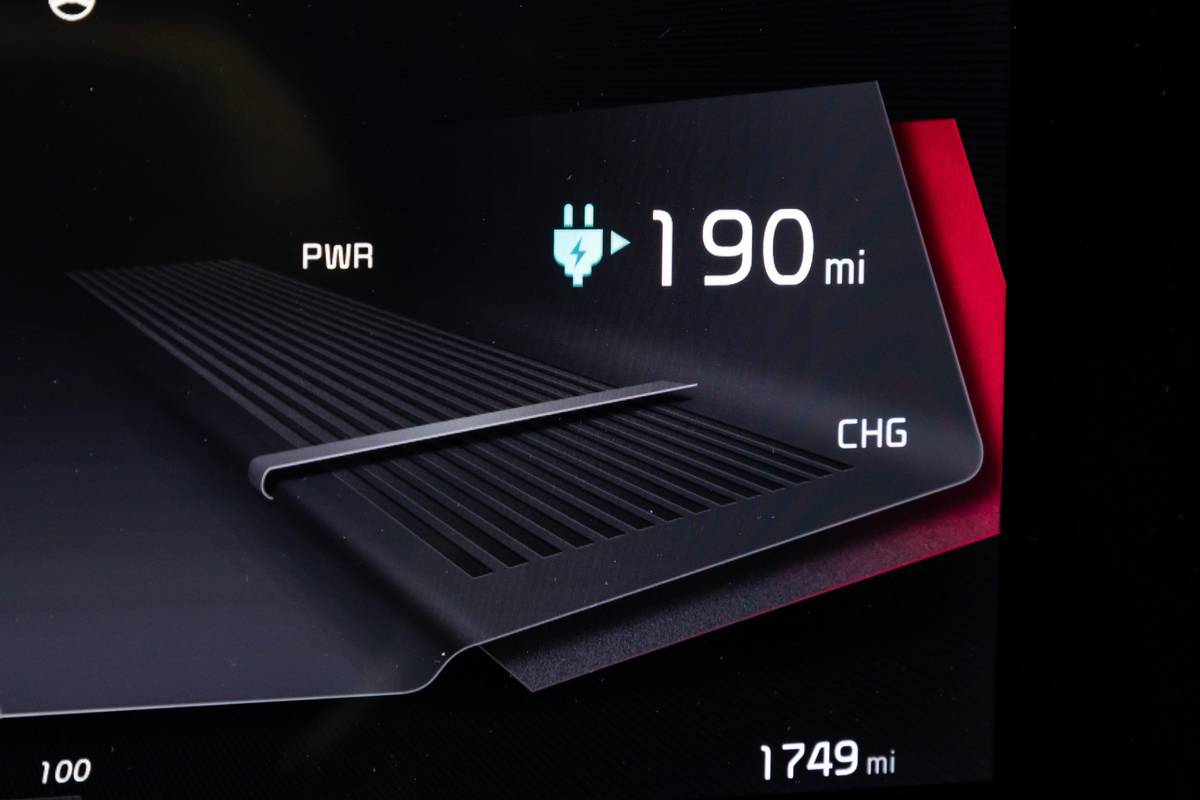
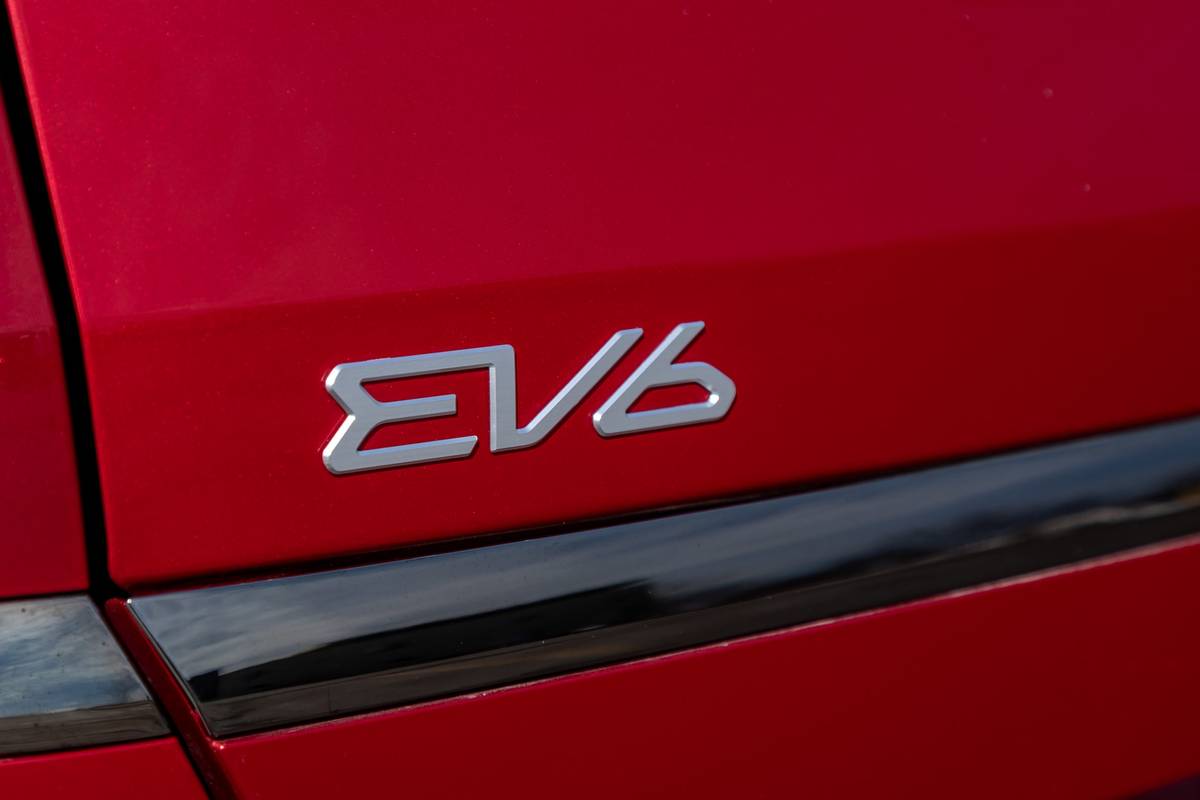
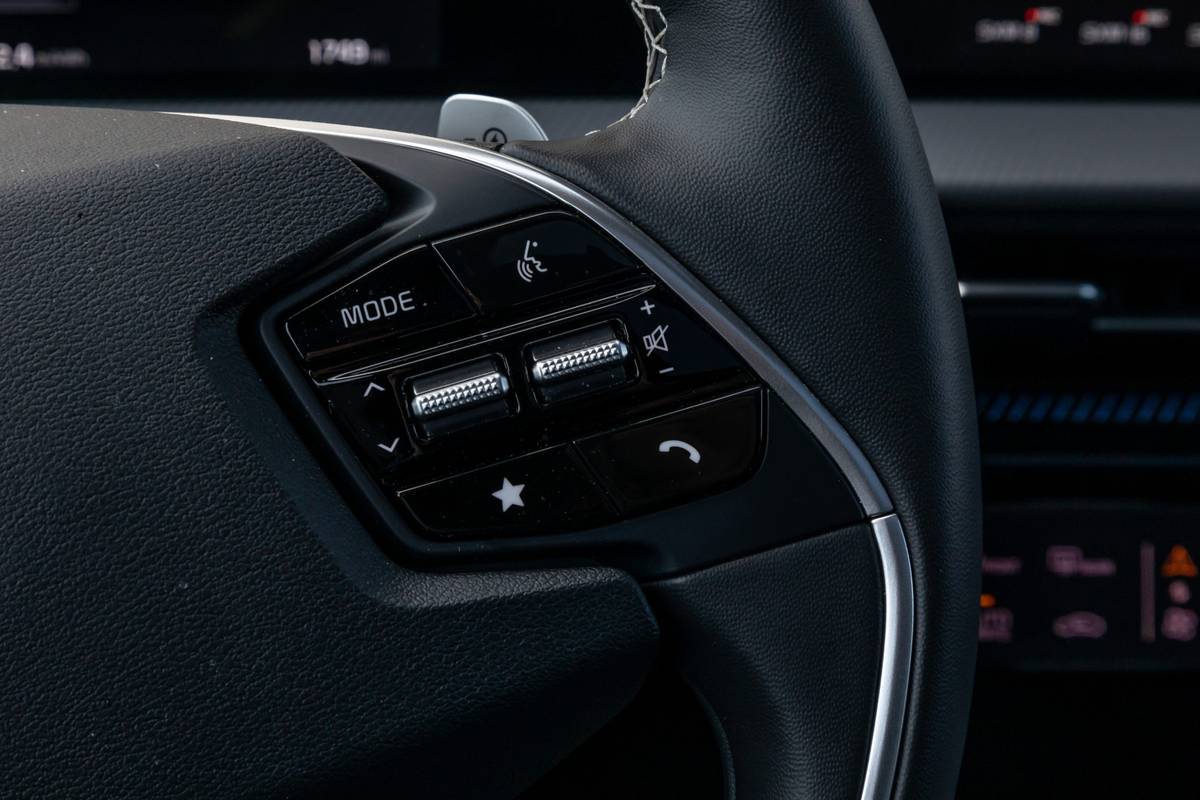
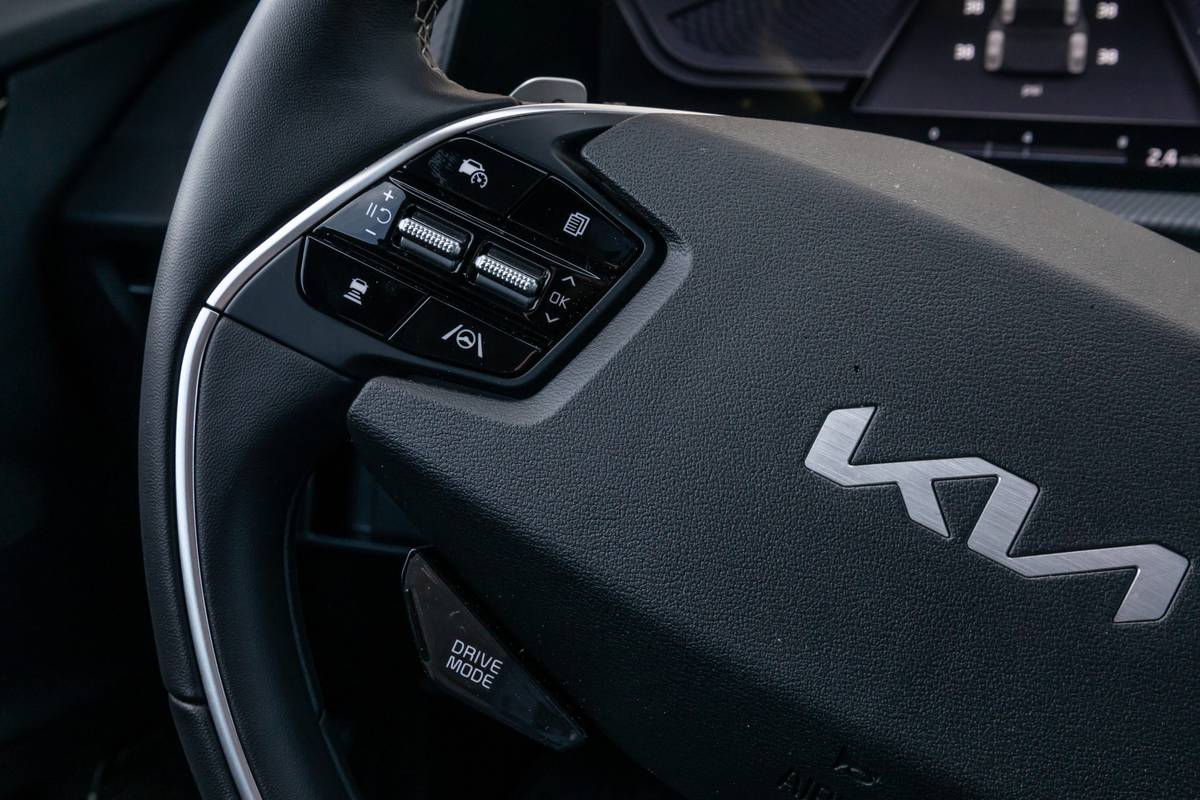
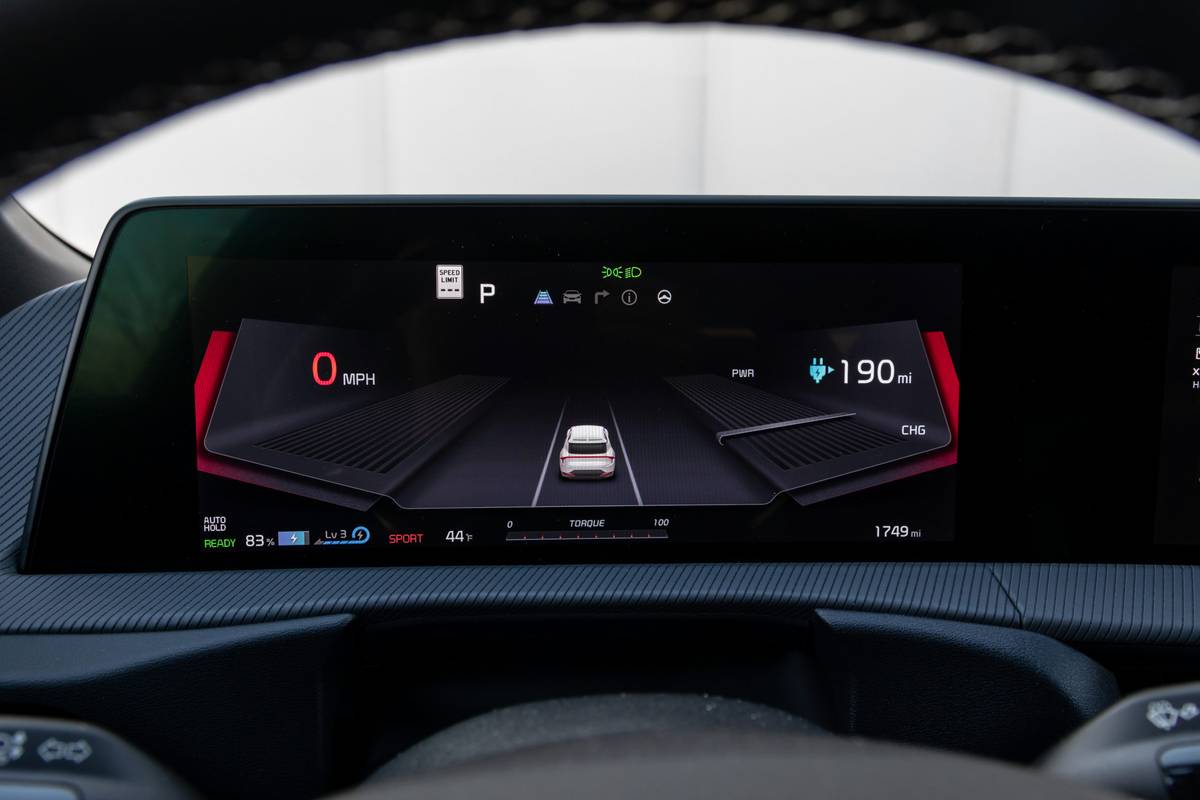
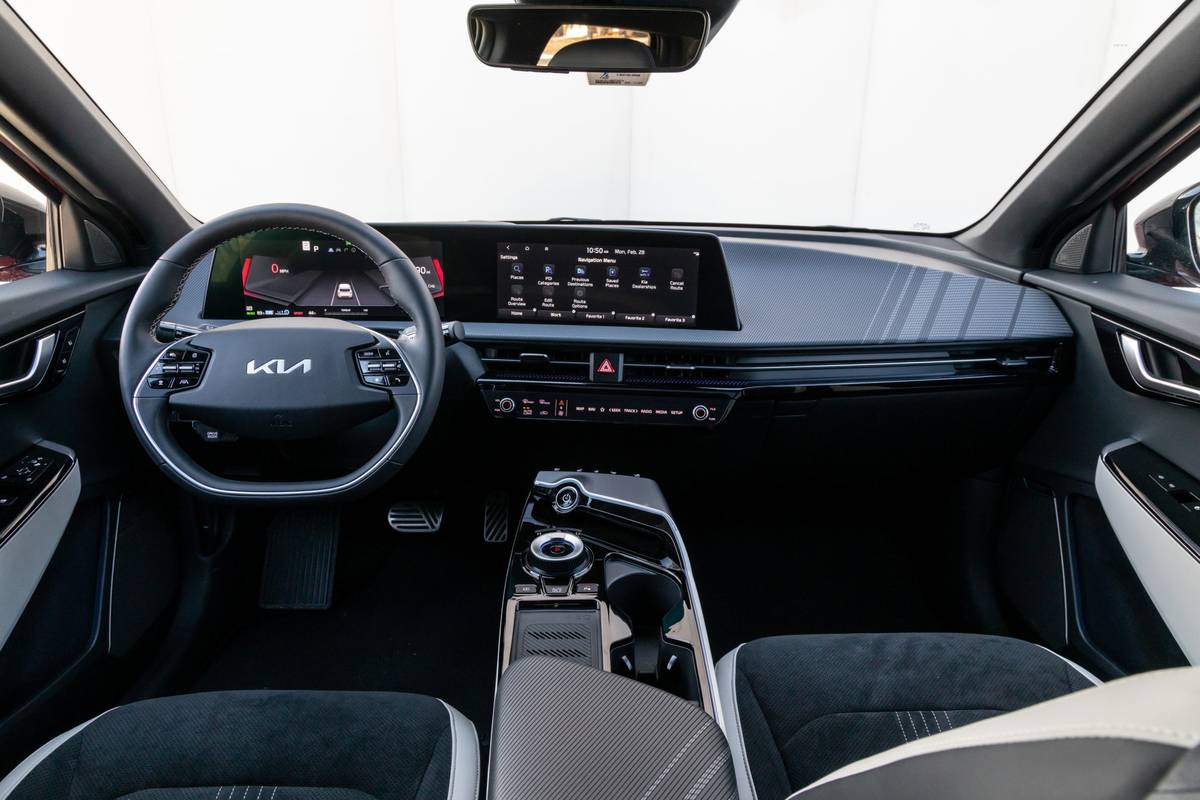







































In the EV6, there’s a standard digital instrument cluster, and on our GT-Line a head-up display that projects normal things (speed, directional indicators) but also augmented reality graphics for navigation and vehicle displays. The strangest part of the interior is the climate and audio controls: They share the same display, but you switch between them using a button to show either climate controls between two dials or audio system controls, with the dials then serving as volume and tuning knobs.
Ride quality: The EV6’s ride quality isn’t just good for EVs — which typically have something objectionable in the way they ride — it’s comfortable compared with most gas-powered compact SUVs. They don’t always ride well, either, but the EV6’s cabin is well isolated from bumps and road imperfections, and tire impacts are well muted.
Noise: Adding to the serenity at highway speeds is the EV6’s hushed cabin, whereas the Model Y sounds like it’s riding on four basketballs for tires. Despite both having Continental tires — the EV6 used 20-inch CrossContact RX, the Model Y 19-inch ProContact RX — the EV6 doesn’t allow tire impact noise into the cabin like the Model Y.
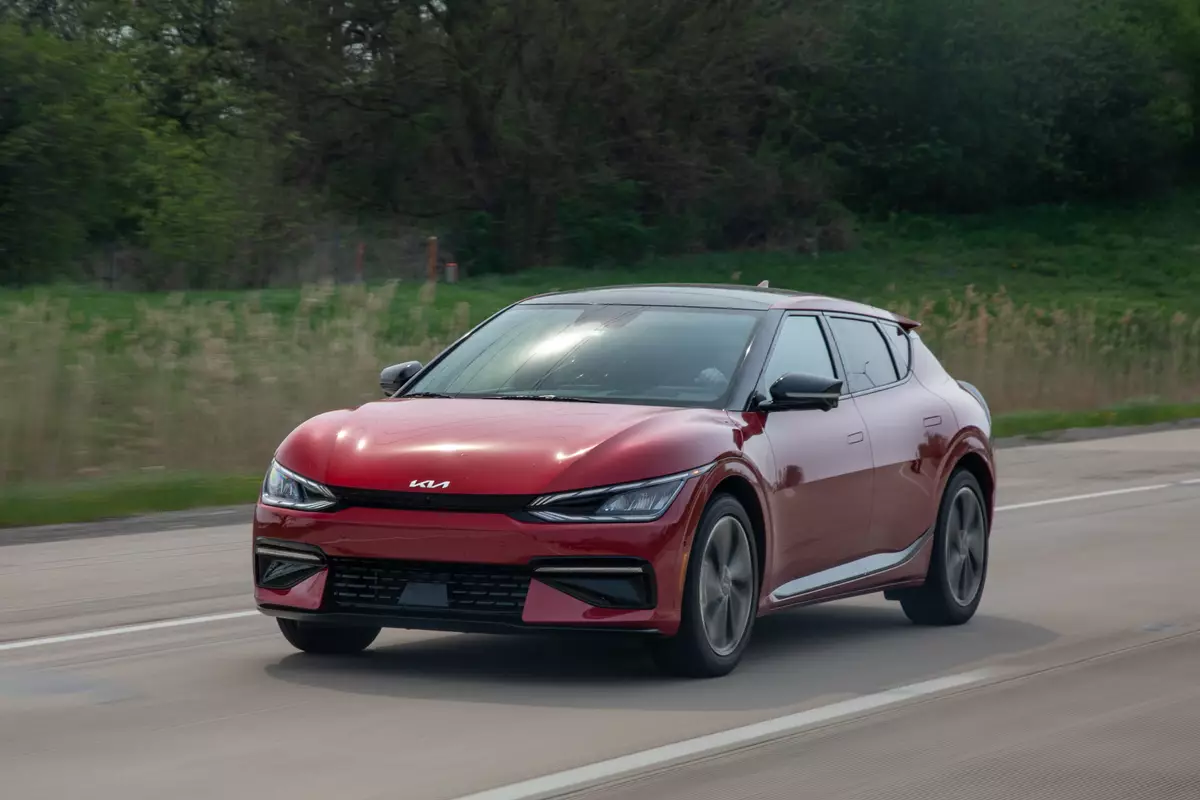
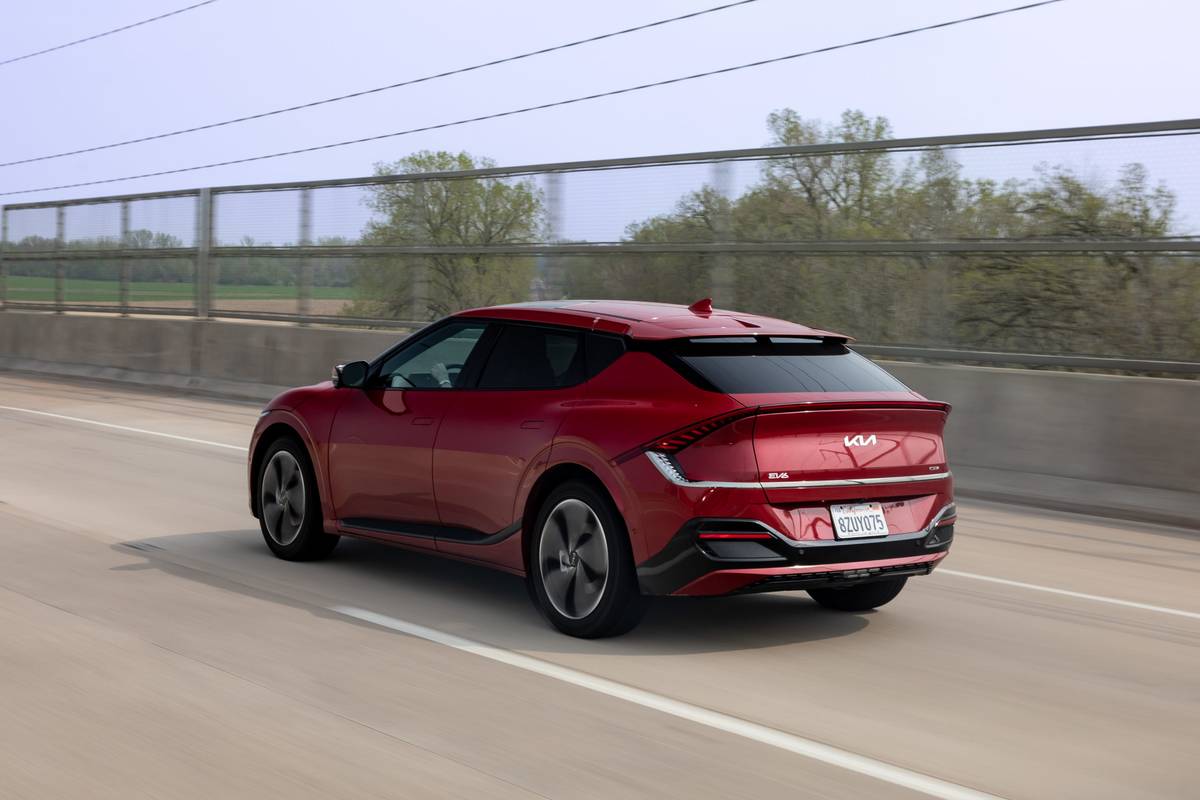




Child-seat fitment: The EV6 gets straight A’s in our Car Seat Check evaluation thanks to its roomy backseat and easy-access Latch anchors that fit an infant seat, rear-facing convertible, forward-facing convertible and booster with ease.
The Bad
Front-seat comfort: While it’s not a significant loss versus the Model Y, the EV6 GT-Line’s front seating position deserves attention. It has a traditional slide-open moonroof that takes up 2-plus inches of headroom compared with the other trim levels that don’t have the moonroof. For some of us, that meant a constant brush up against the top of the interior — even with the driver’s seat positioned as low as it would go.
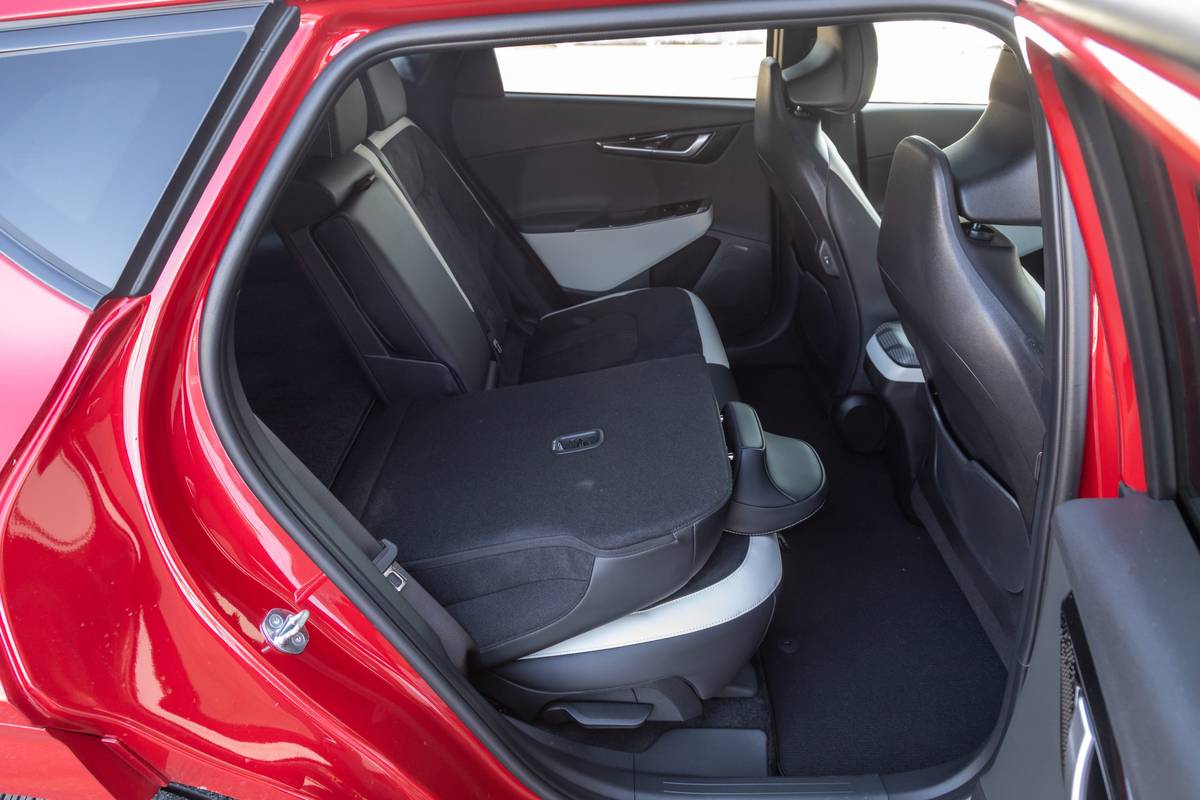




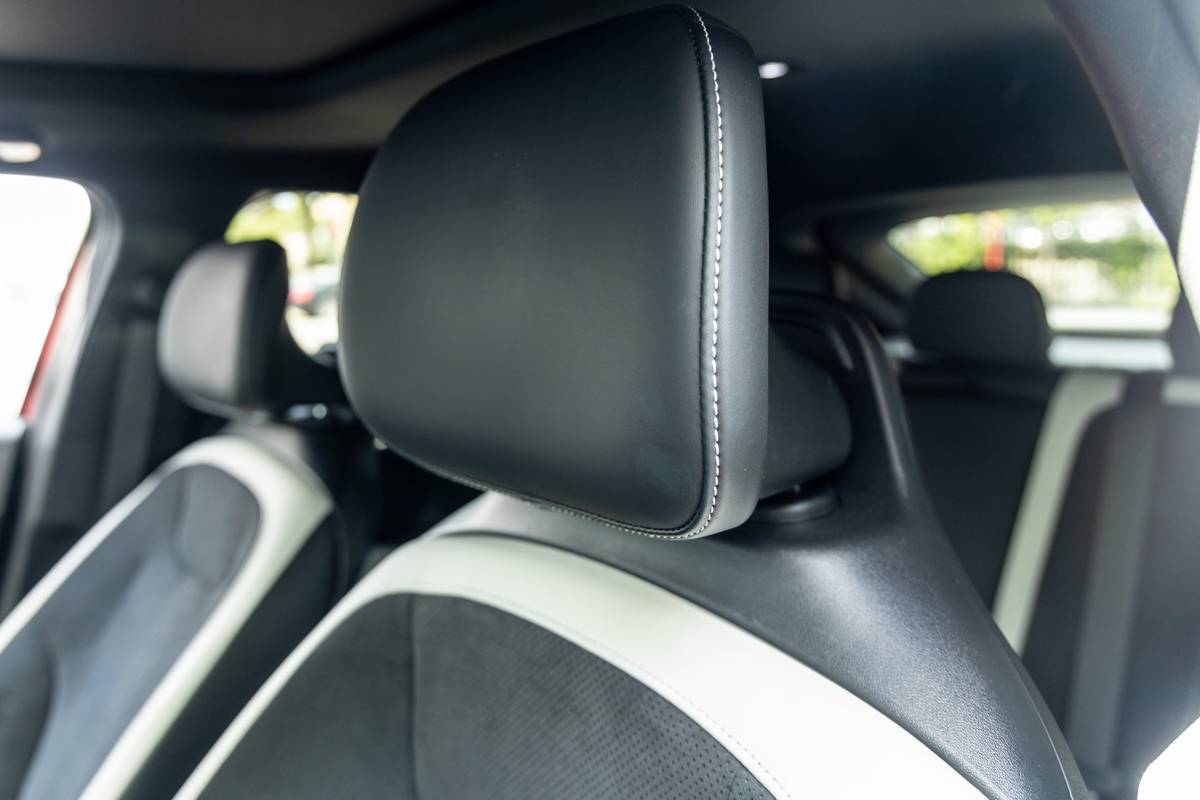








Backseat comfort: There’s no arguing there’s plenty of space in the backseat, it’s just that the seat itself is in a compromised configuration for comfort. You sit with your knees raised at an uncomfortable elevation because the seat cushion is low.
High-speed acceleration: The EV6 has the goods at low speeds, with punchy acceleration up to 60 mph. That’s perhaps where it matters most, but if you spend a lot of time on the highway, you’ll notice there’s a deficiency versus the Model Y, which effortlessly accelerates at higher speeds.
Visibility: It’s hard to imagine a car with worse rearward visibility than the Model Y, but over-the-shoulder visibility suffers in the EV6 because of its large head restraints that block quick glances. There are electronic visibility aids, including blind spot camera views in the instrument panel, but those can be obstructed by a steering wheel that can block the instrument cluster display in natural driving positions.
Research the Kia EV6 | Search Inventory | Car Seat Check
More Takeaways
The above summaries include where we saw the biggest spreads in performance, but perhaps more surprising is where we didn’t see a big spread: efficiency and estimated range. With its better EPA numbers, we thought the Tesla would have the advantage, but at the beginning of our highway range test where we drove 215 miles at 70 mph, the Model Y only had a 21-mile range advantage when charged to 100% (252 miles versus 231 miles for the EV6). That’s less than the Model Y’s 52-mile advantage in EPA range estimates (326 miles versus 274).
Our measured efficiency after 215 miles on the highway, another area we thought we’d see a big difference, netted only a slight advantage to the Tesla: The EV6 traveled 3.3 miles per kWh while the Model Y was slightly more efficient at 3.4 miles per kWh. We’ve always been impressed with how well the Model Y predicts range use, and it came out on top here, too. Comparing actual miles traveled versus predicted range used, the Tesla was the most accurate in predicting range consumption at 96.7% accurate to the Kia’s 91.8% accuracy — so while the Model Y did gain points from its efficiency and accuracy, it wasn’t a very large difference.
Like all of our multicar comparisons, the winner isn’t always the best pick for your individual likings and use; our results are based on the as-tested vehicles with all of the options they do (or don’t) have, not the model as a whole. Find what’s most important to you (child safety seat fitment, cargo space, ride quality, controls, etc.) and use that score to see which SUV plays to your needs.
By our criteria, however, the Kia EV6 comes out on top thanks to its fast-charger performance, ride quality, less noise and more traditional controls and user interface that all come at a significant price advantage.
Editor’s note: This story was updated Aug. 12, 2022, to reflect the correct score for the EV6.
More From Cars.com:
- 2022 Kia EV6 Review: Doing It Better Than Most
- Is the Kia EV6 a Good Electric Car? 5 Pros and 3 Cons
- Here Are the 11 Cheapest Electric Vehicles You Can Buy
- Which Electric Cars Are Still Eligible for the $7,500 Federal Tax Credit?
- Electric Cars With the Longest Range
Cars.com’s Editorial department is your source for automotive news and reviews. In line with Cars.com’s long-standing ethics policy, editors and reviewers don’t accept gifts or free trips from automakers. The Editorial department is independent of Cars.com’s advertising, sales and sponsored content departments.
Featured stories









